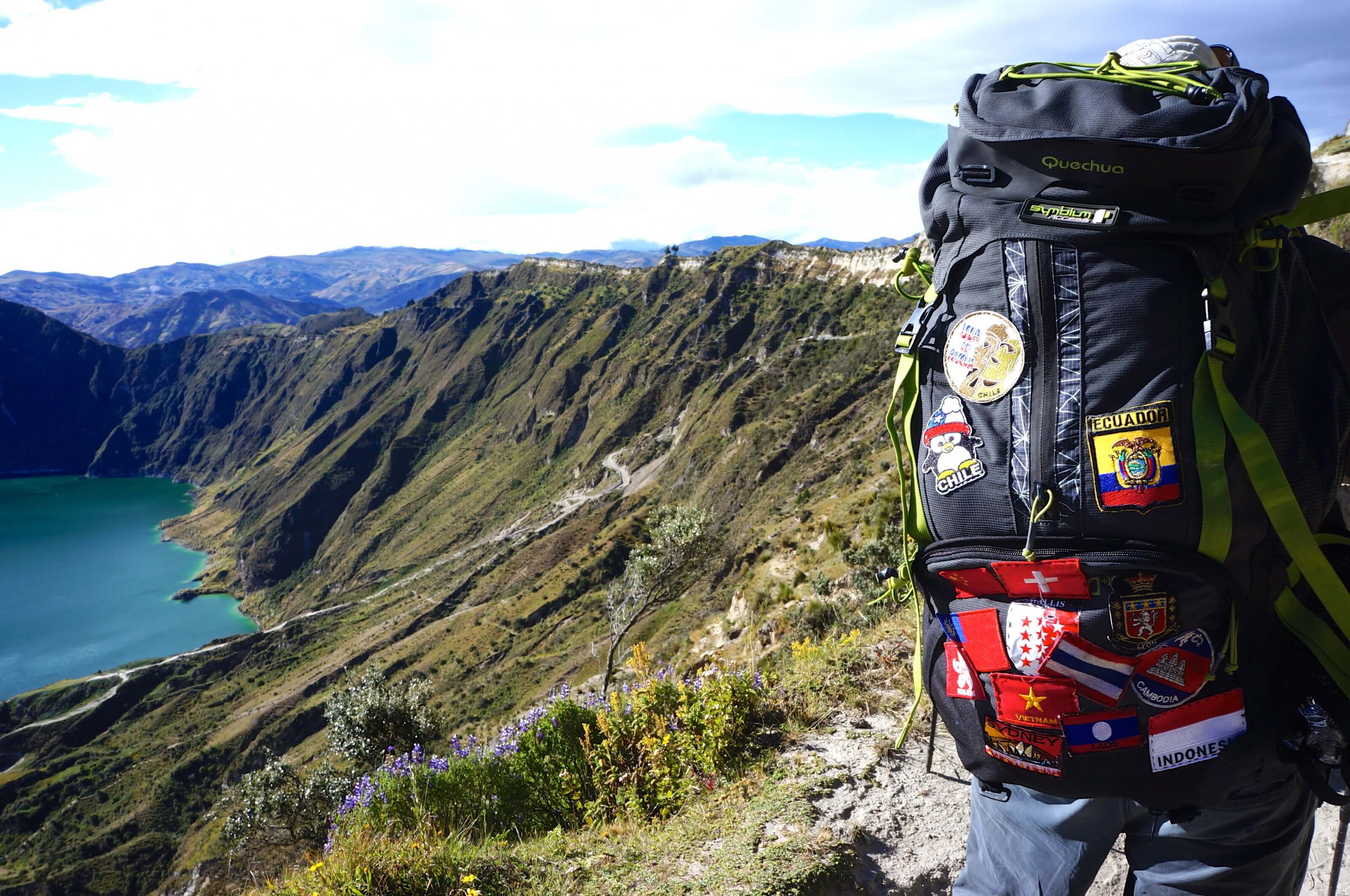Spanish courses, accommodation, transport, food and everything you need to know about the travel costs and the budget for backpacking in Ecuador!
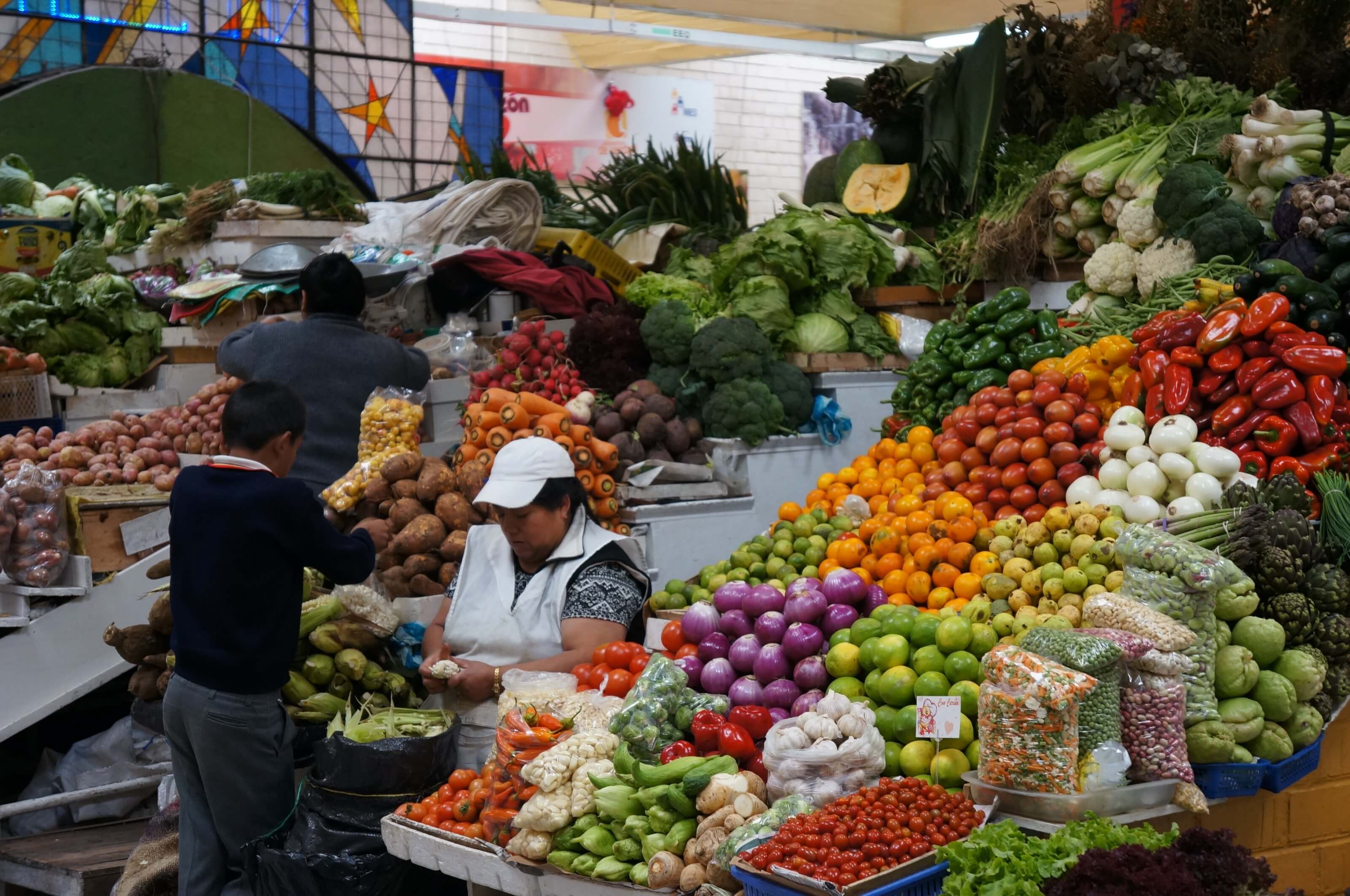
We spent 3 months in Ecuador during our trip around the world. In this still relatively unknown and often overlooked country (no, Ecuador is not a dangerous country!), our itinerary was quite diverse: 2 months in Quito to learn Spanish and discover the must-see attractions of the Ecuadorian capital, followed by 1 month between Mindo and its butterflies, Baños and its waterfall route, the ascent of Cotopaxi, the sublime Quilotoa Lagoon and its trek, and a mandatory visit to the Ecuadorian Amazon.
This two-stage journey allowed us to explore the country thoroughly! We share all our tips to help you plan your next trip to Ecuador. Ready to take off to South America?
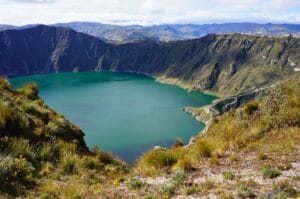
At the bottom of the page, you'll find all our blog articles about Ecuador. Prefer searching by region? Feel free to check out our map of Ecuador, where all our articles are geographically located.
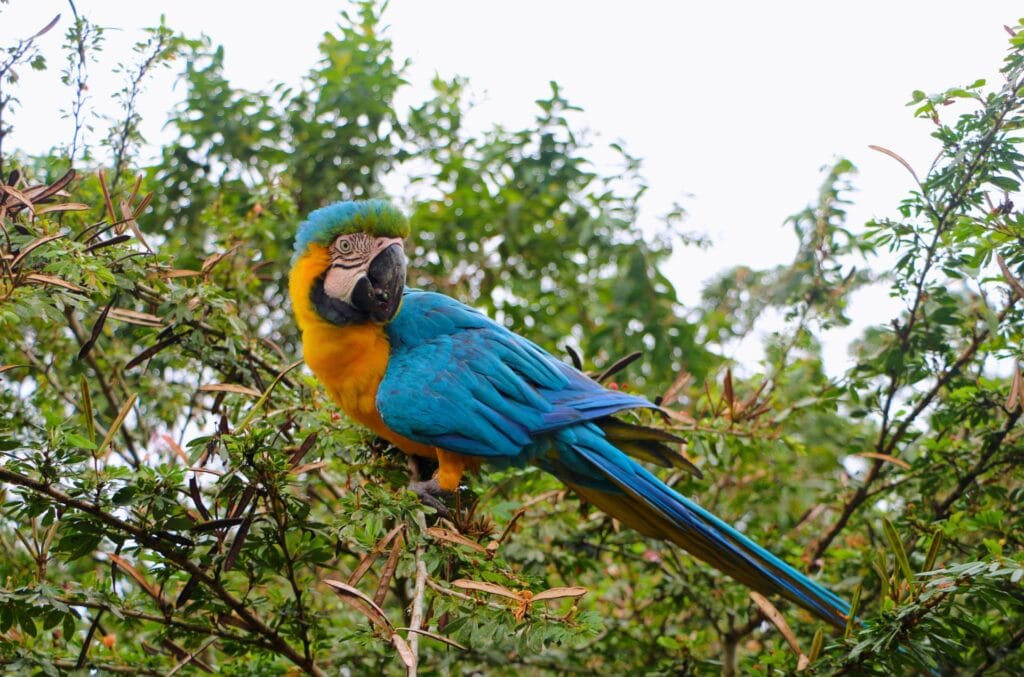
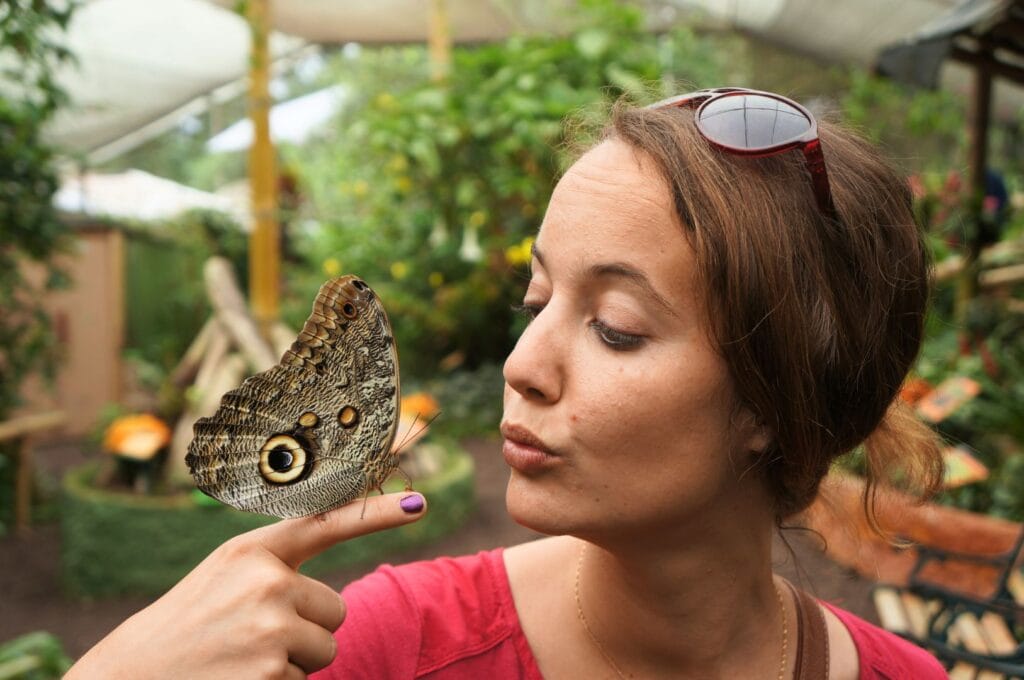
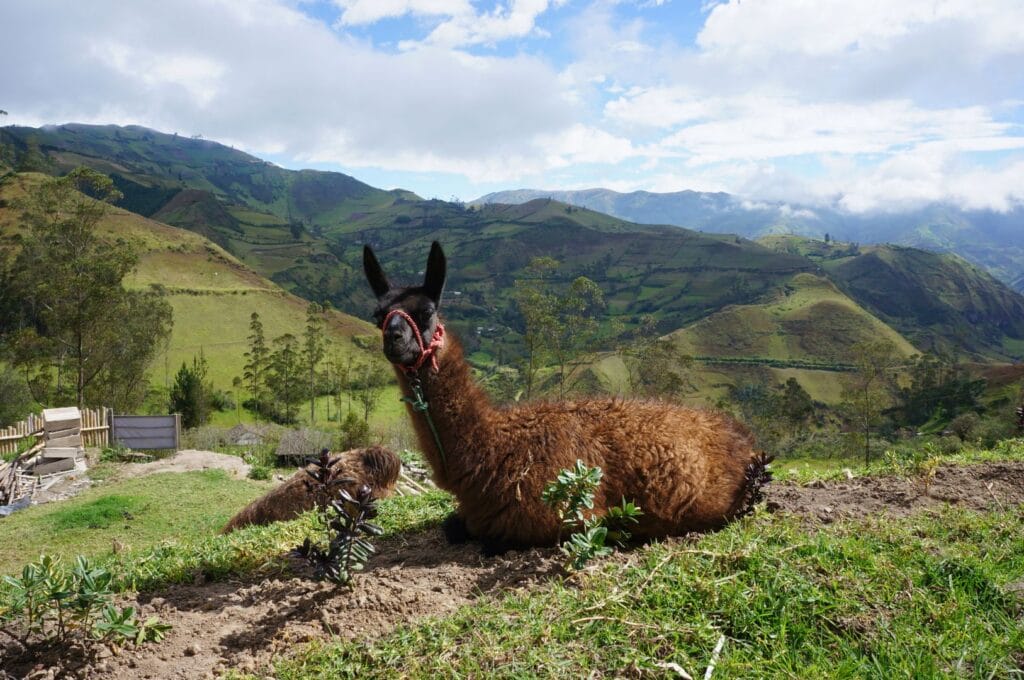
Ecuador is a Latin American country with a unique geography, but the climate is generally tropical, with a dry season and a rainy season.
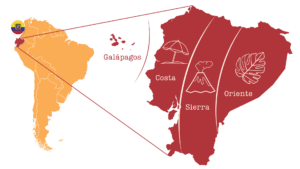
We traveled to Ecuador between April and June, and except for the last week when the weather was terrible in Cuenca and Riobamba, we had quite decent weather. Small tip: bring sunscreen and a hat, the sun burns!
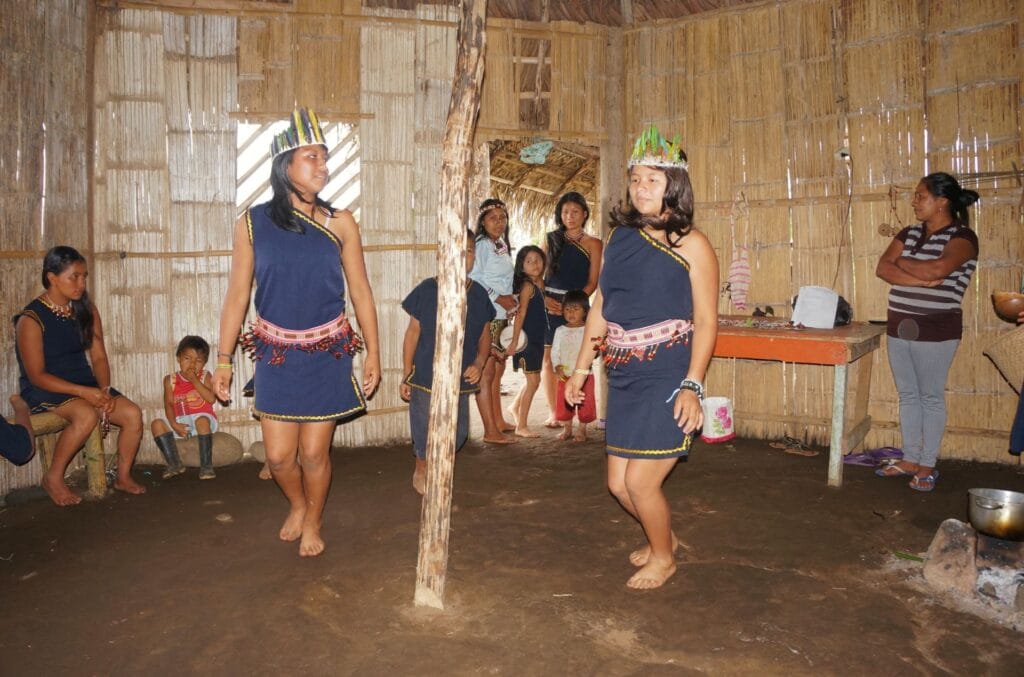
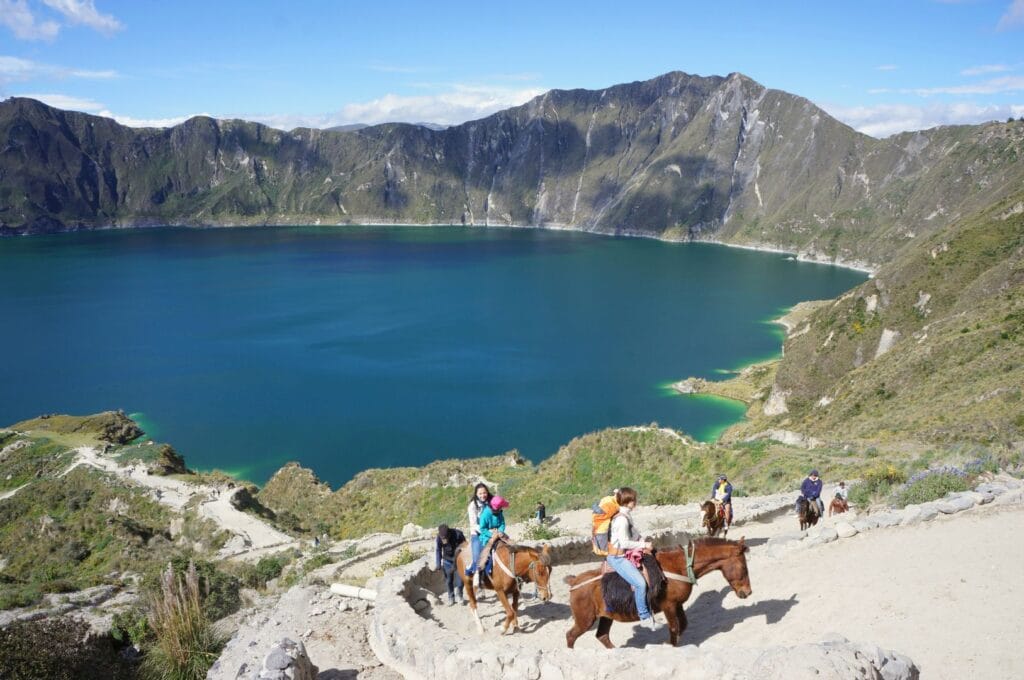
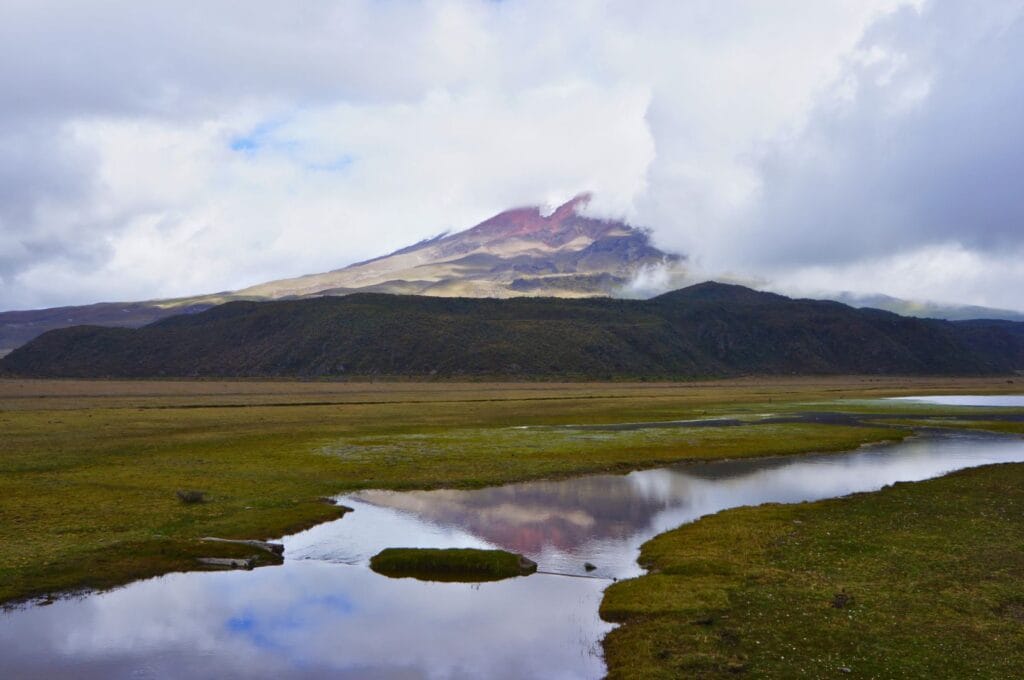
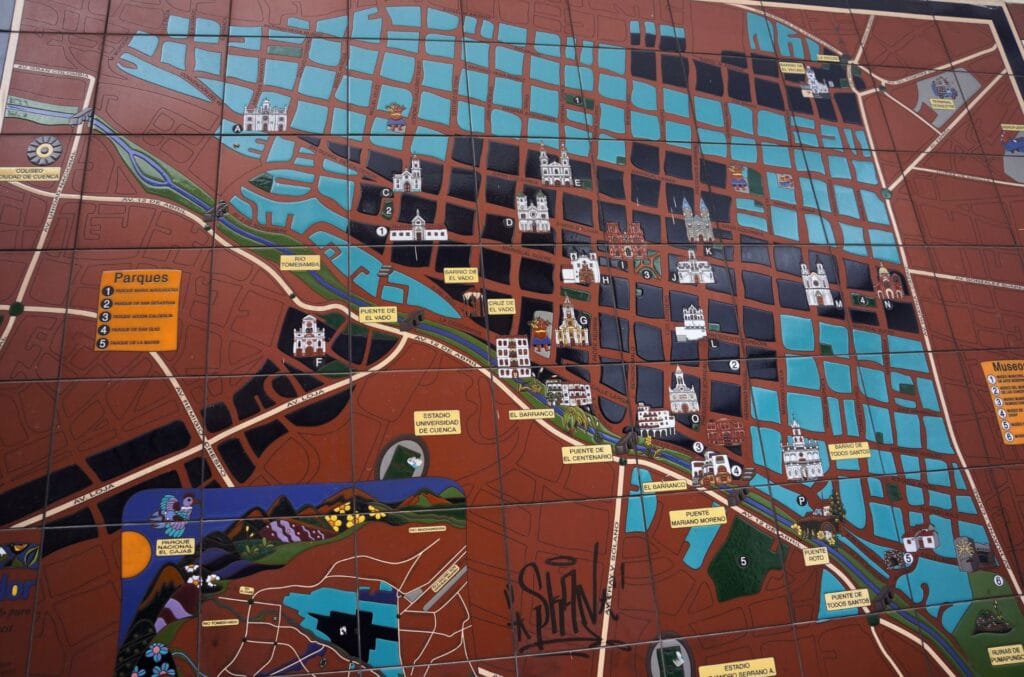
To prepare your trip, here are the details of a 15-day backpacking trip in Ecuador with the essence of natural and cultural wonders. Further down, we extend the pleasure by offering you the itinerary for a 1-month trip across the country. For the order, it depends on whether you are on a world tour or not. Otherwise, we recommend this itinerary for 15 days:
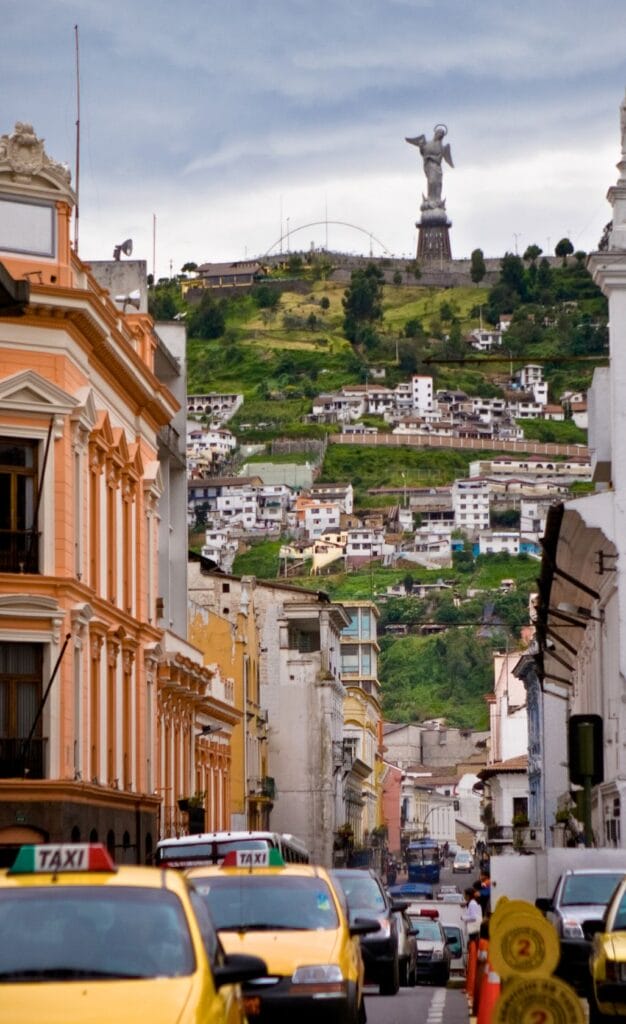
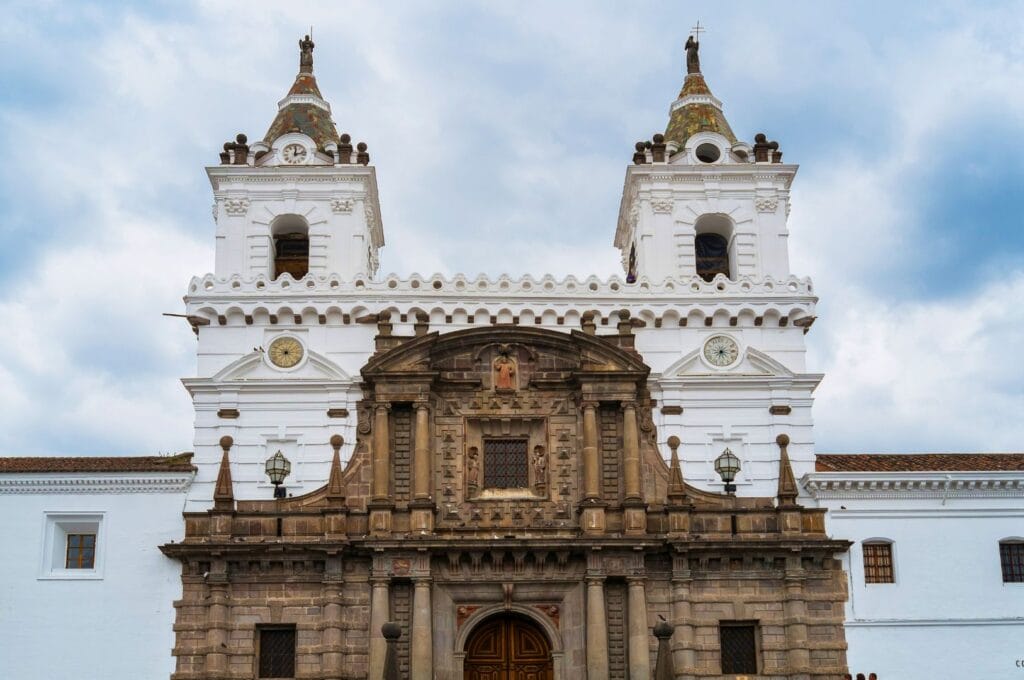
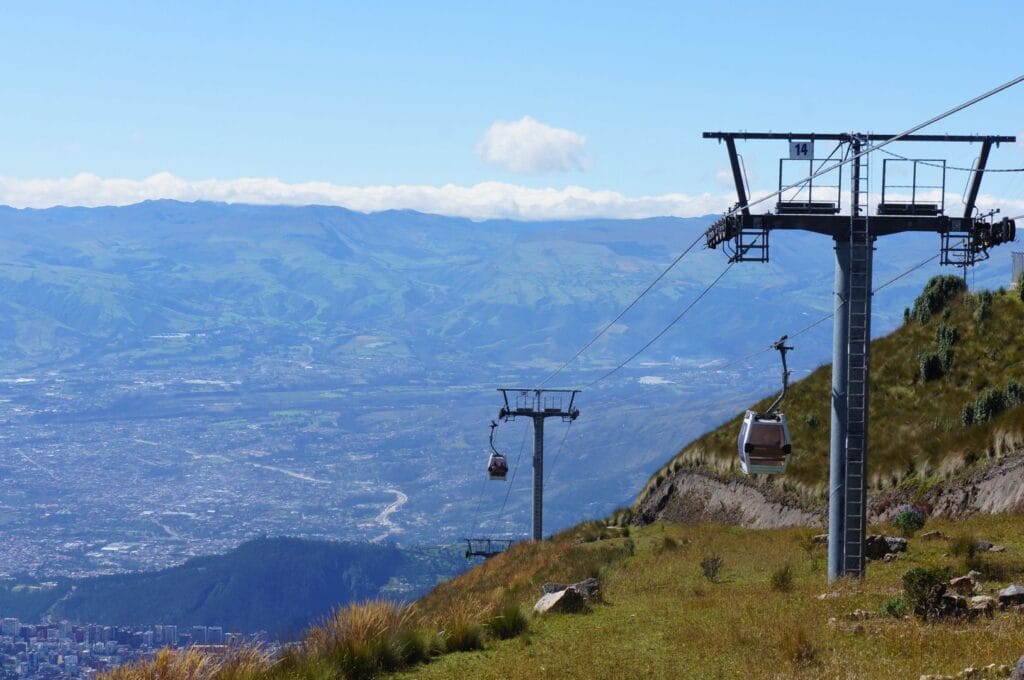
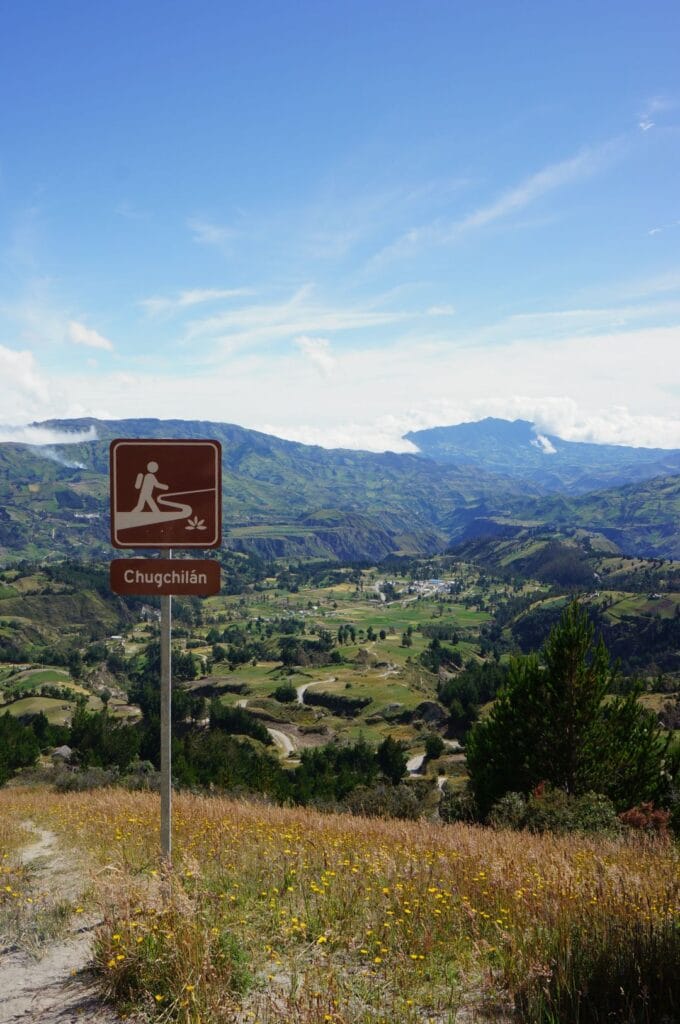
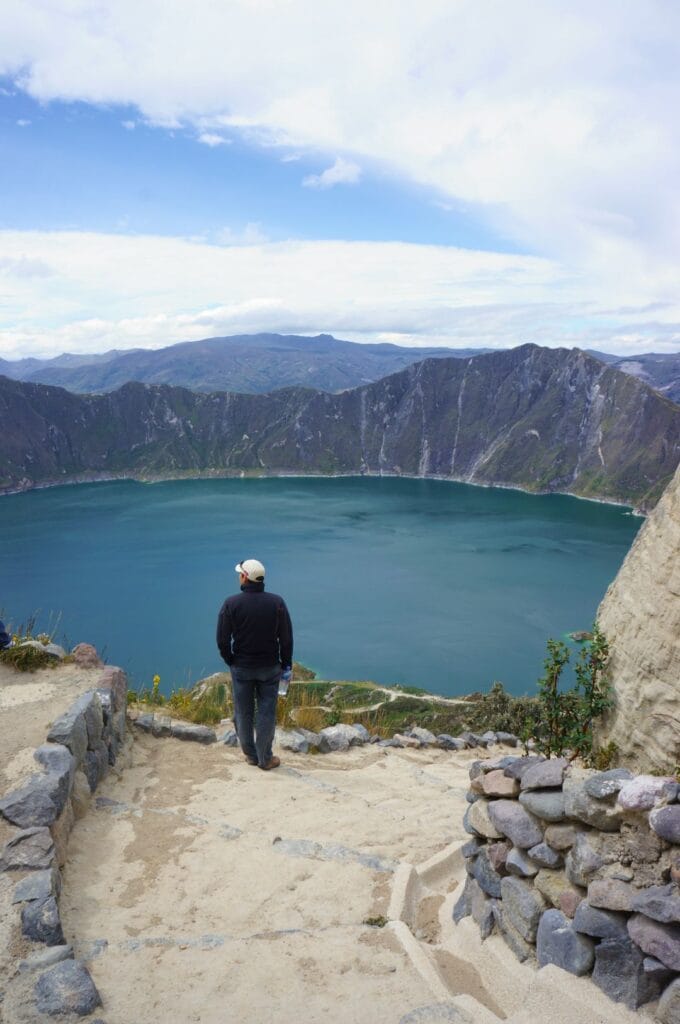
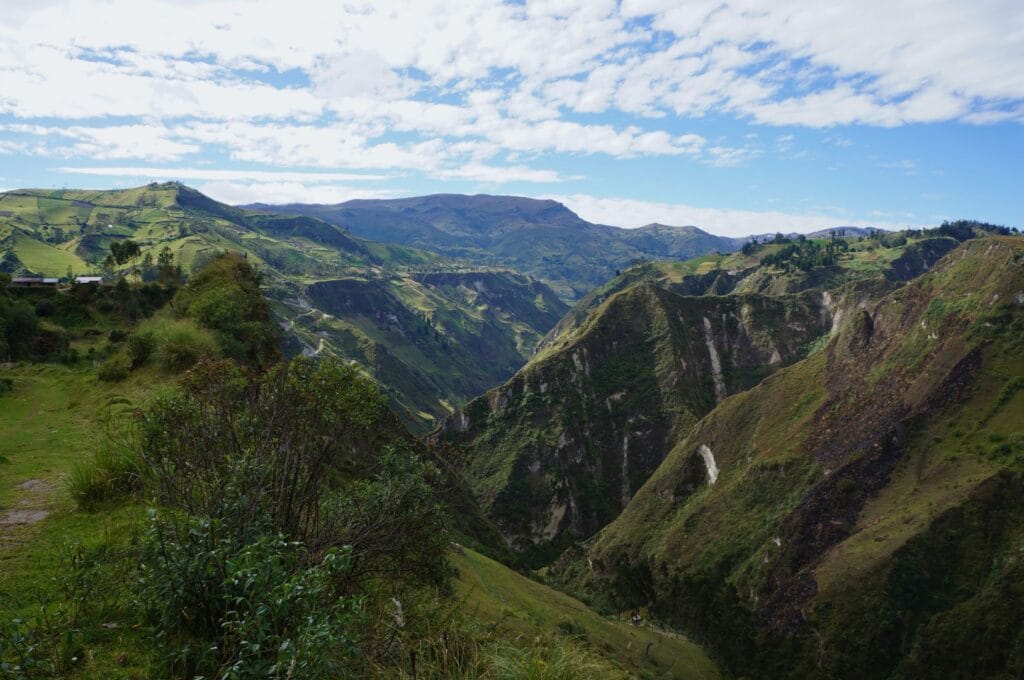
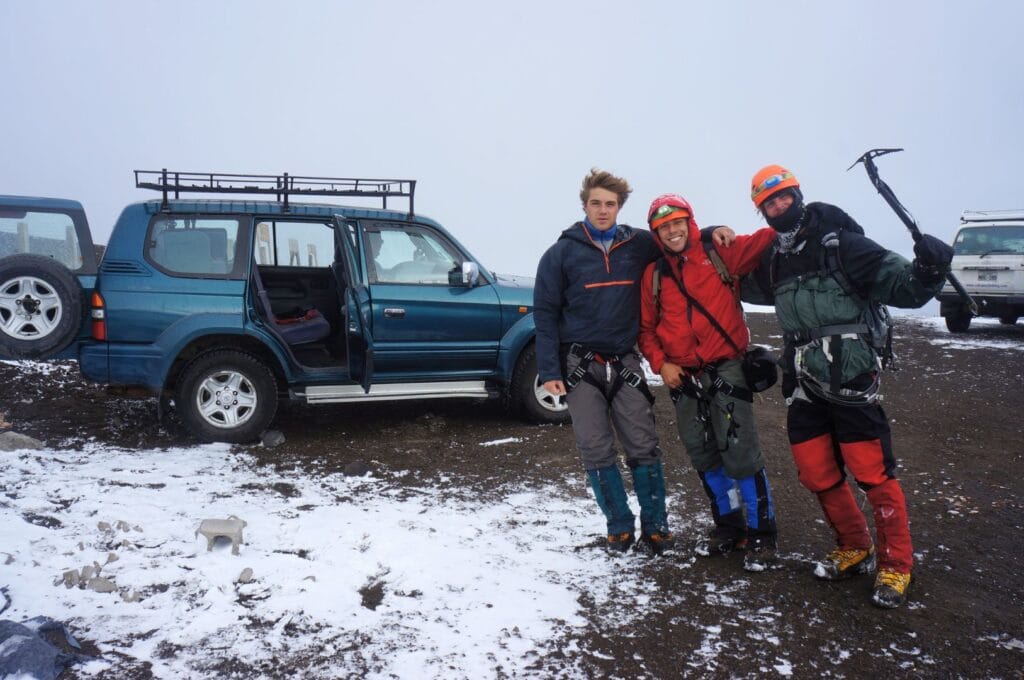
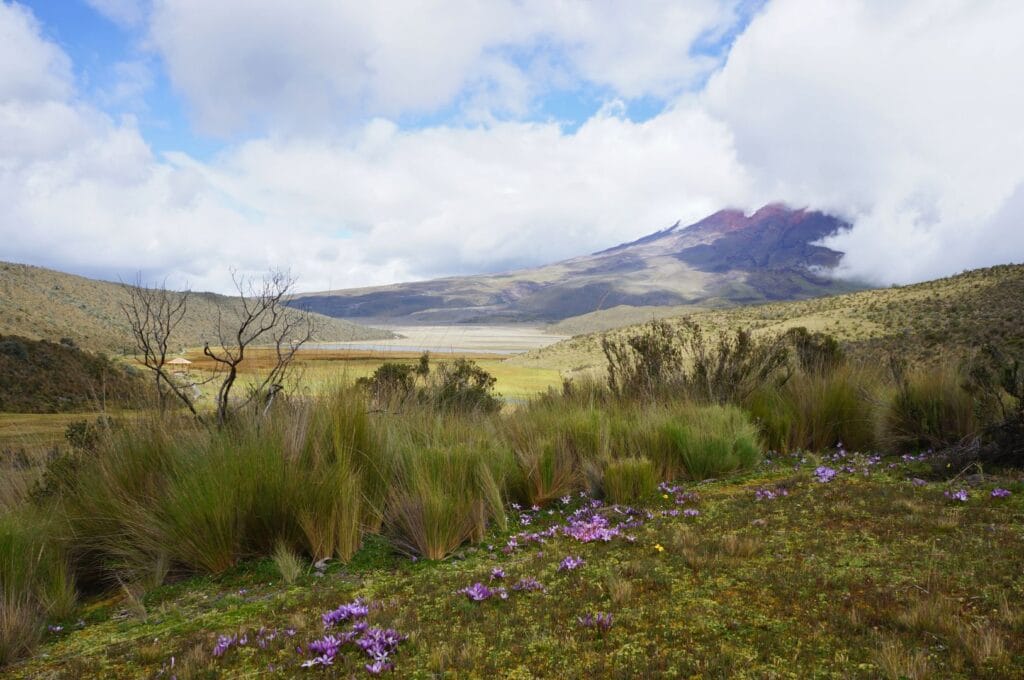
OR
Note: a less expensive alternative to the Galápagos is to go by boat for 1 day to Isla de la Plata, nicknamed "the Galápagos of the poor." There, you will see the blue-footed boobies, emblematic of the Galápagos, and may have the chance to observe whales.
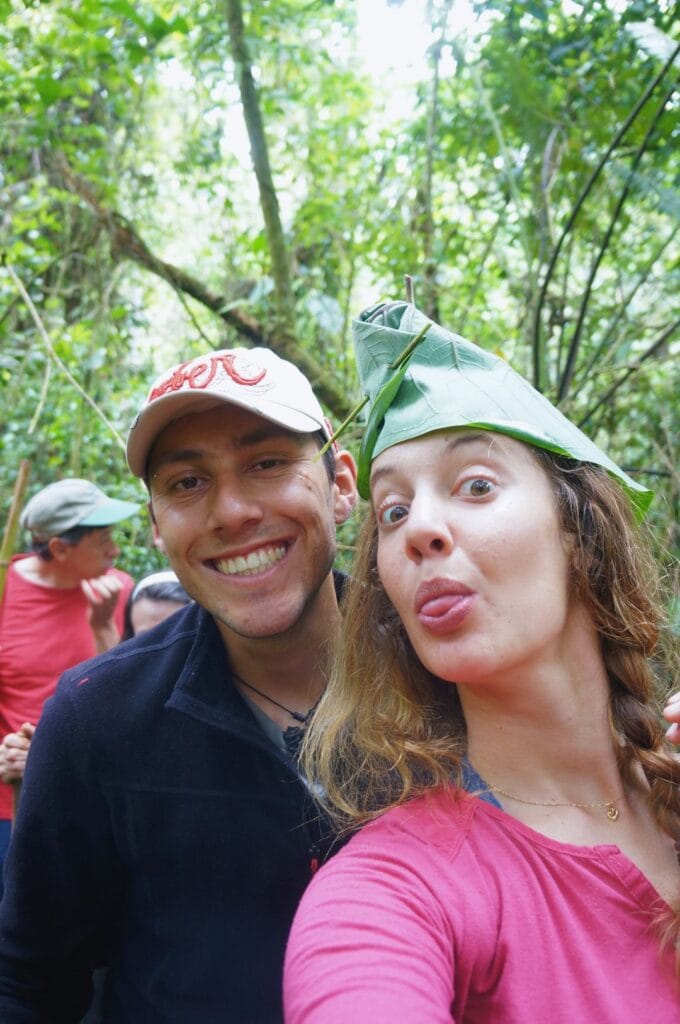
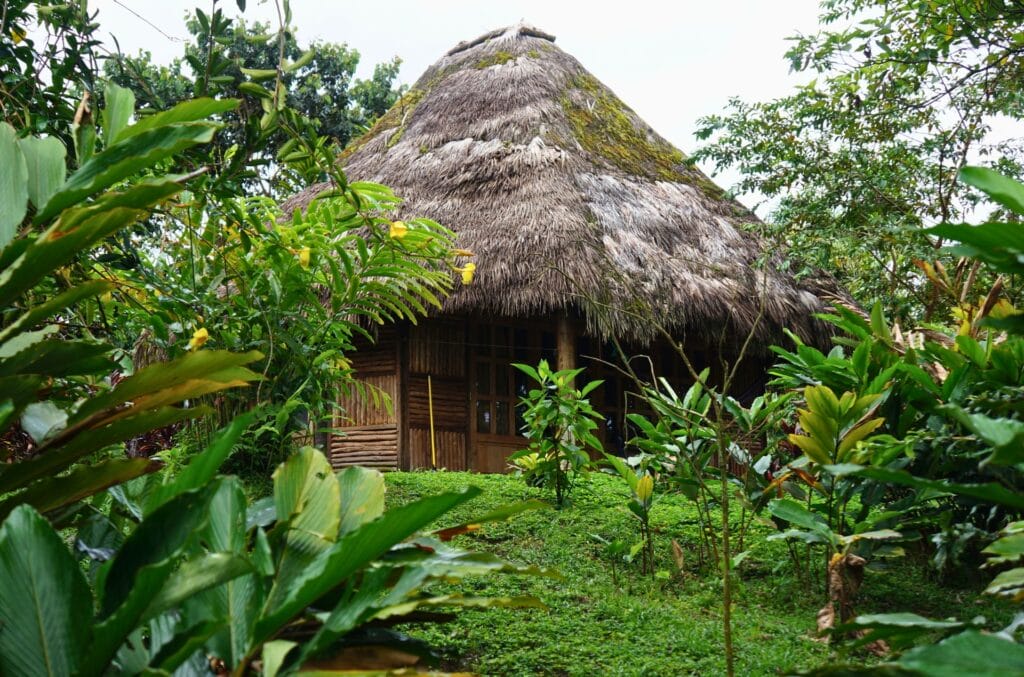
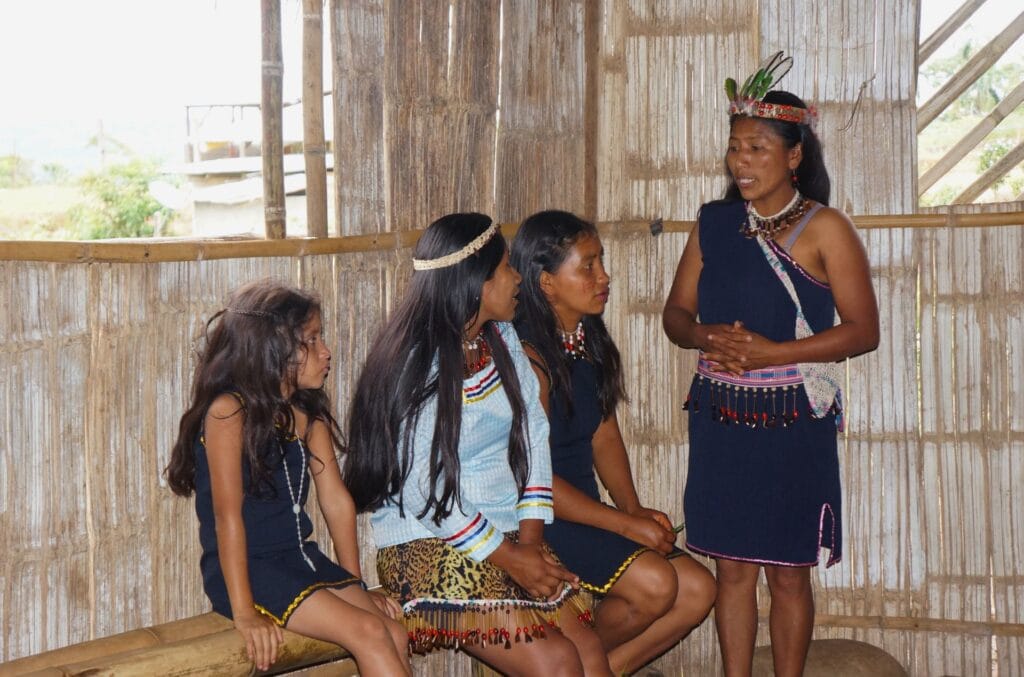
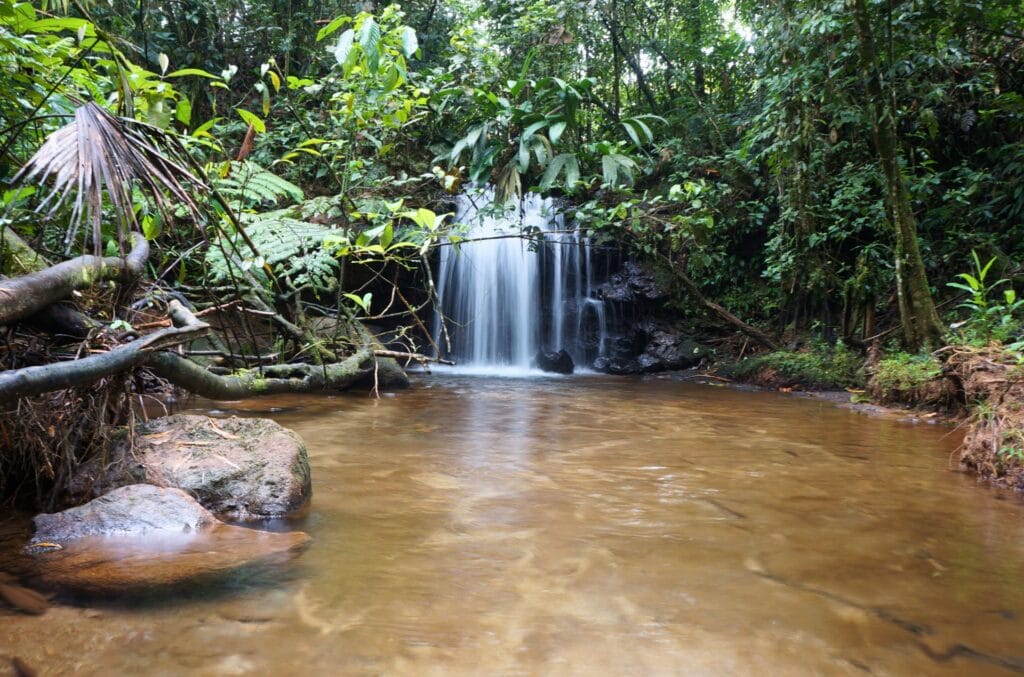
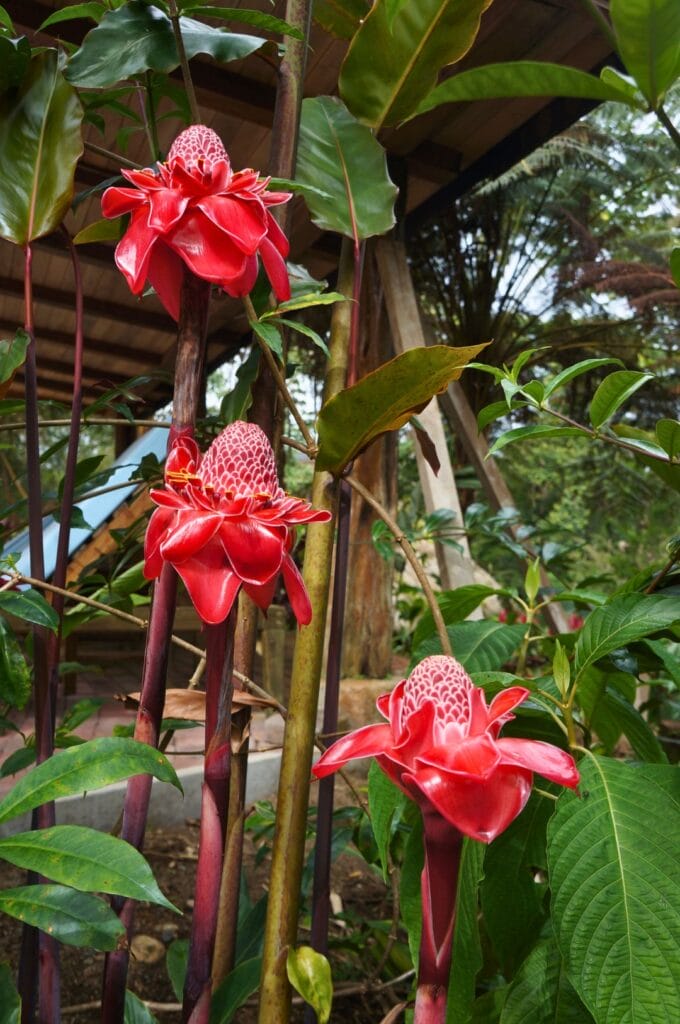
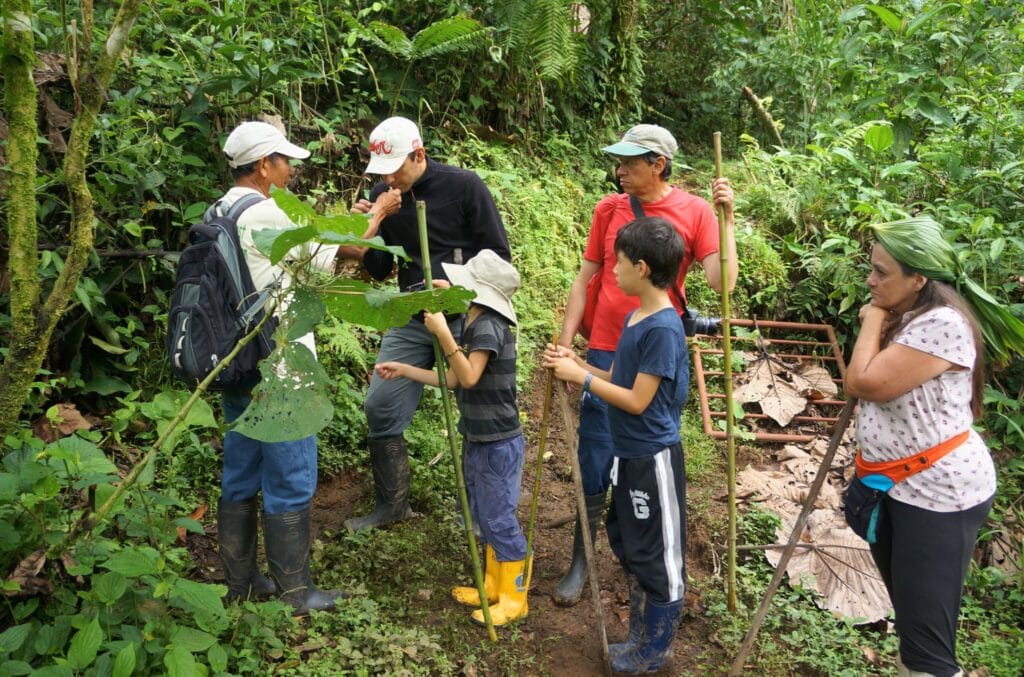
1 month in Ecuador: you can take the above itinerary and adjust it according to your desires, such as spending more than 5 days in the Galápagos, taking time for the Amazon, doing the entire Quilotoa Loop, and enjoying a little more time in Quito and its surroundings. We also recommend adding the following steps:
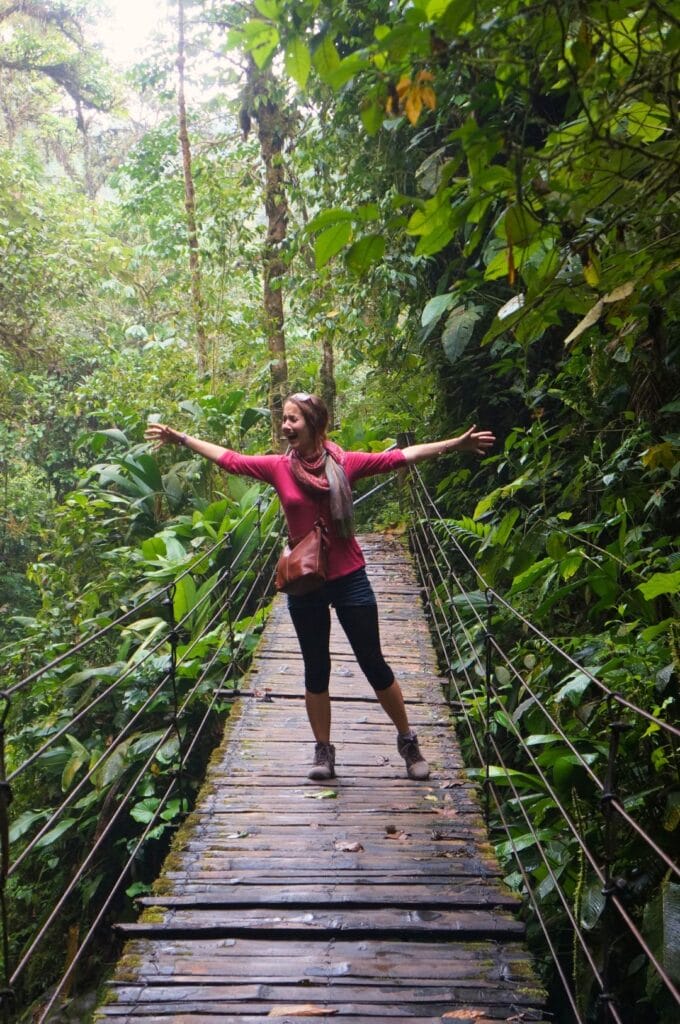
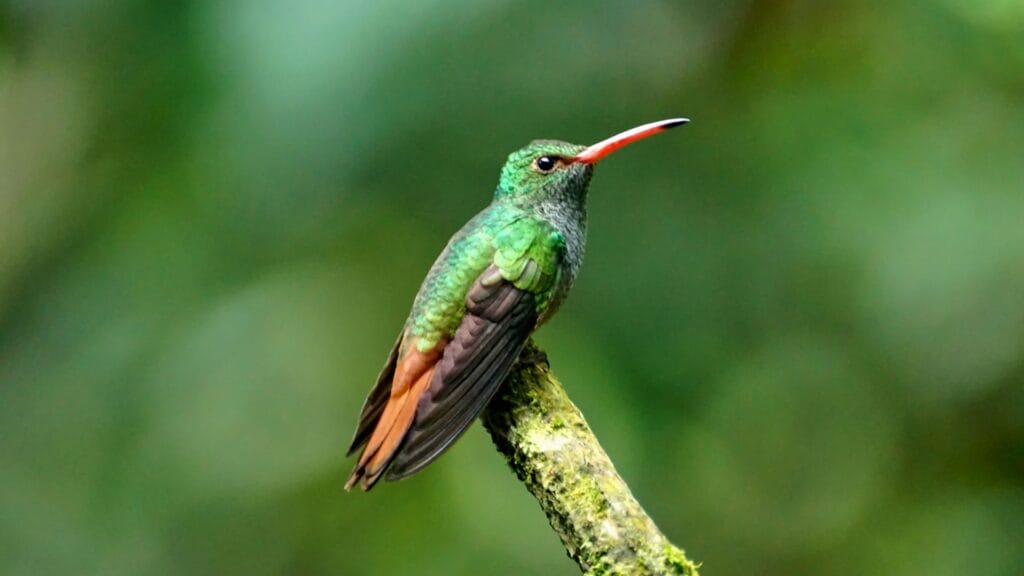
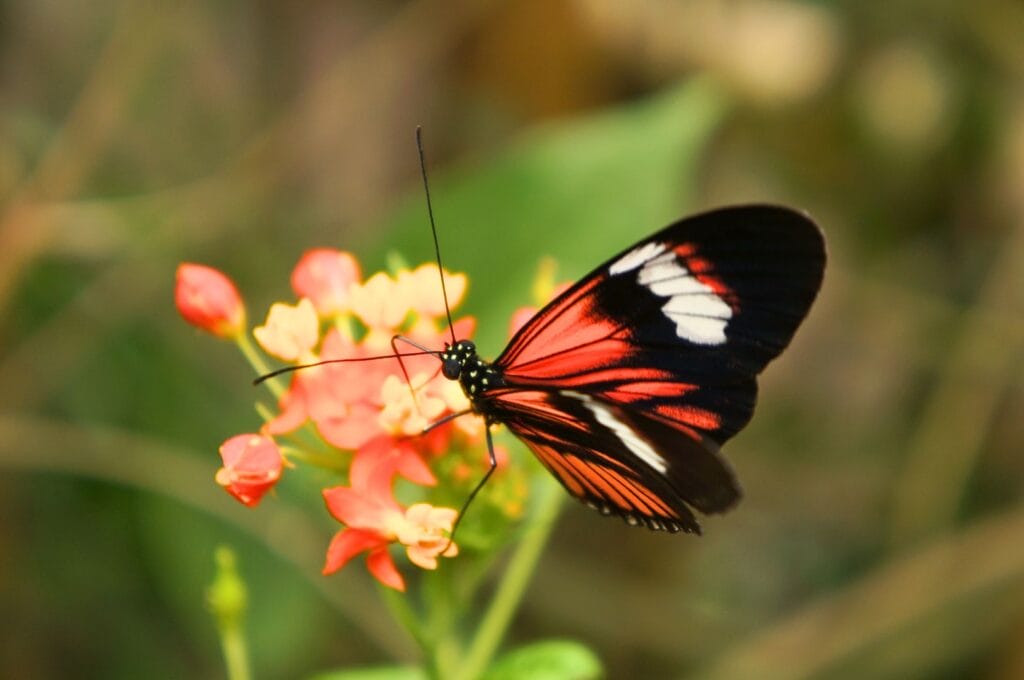
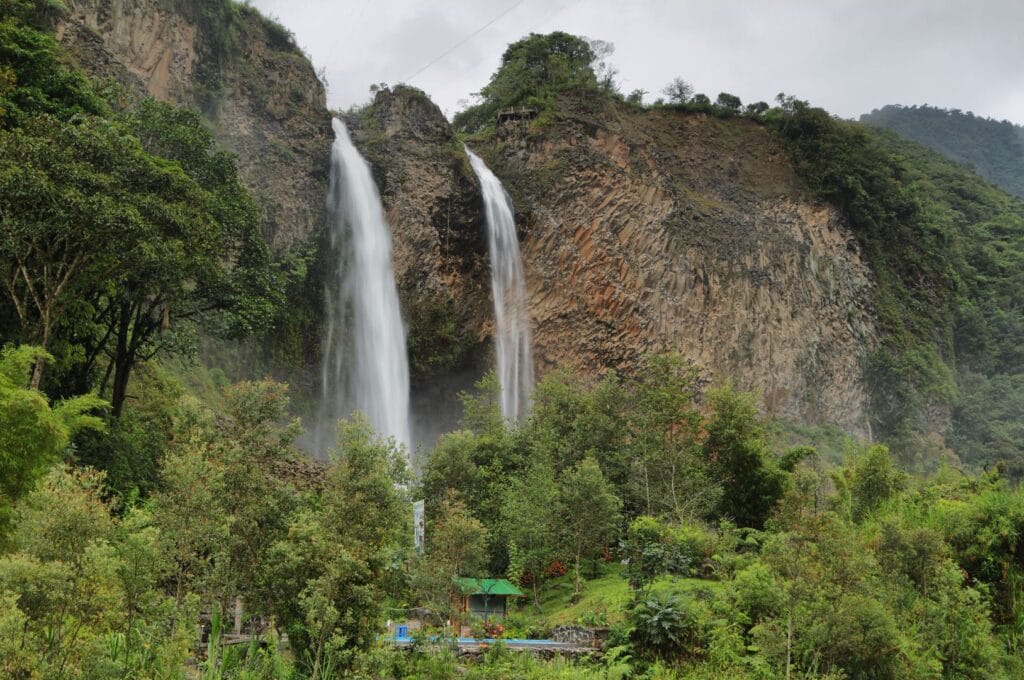
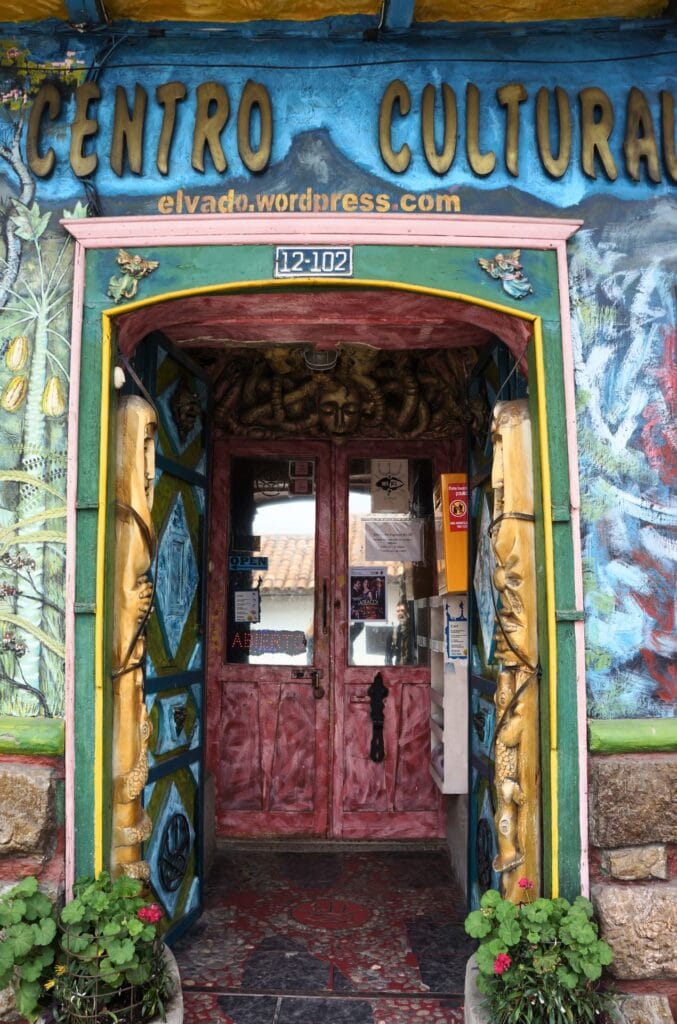
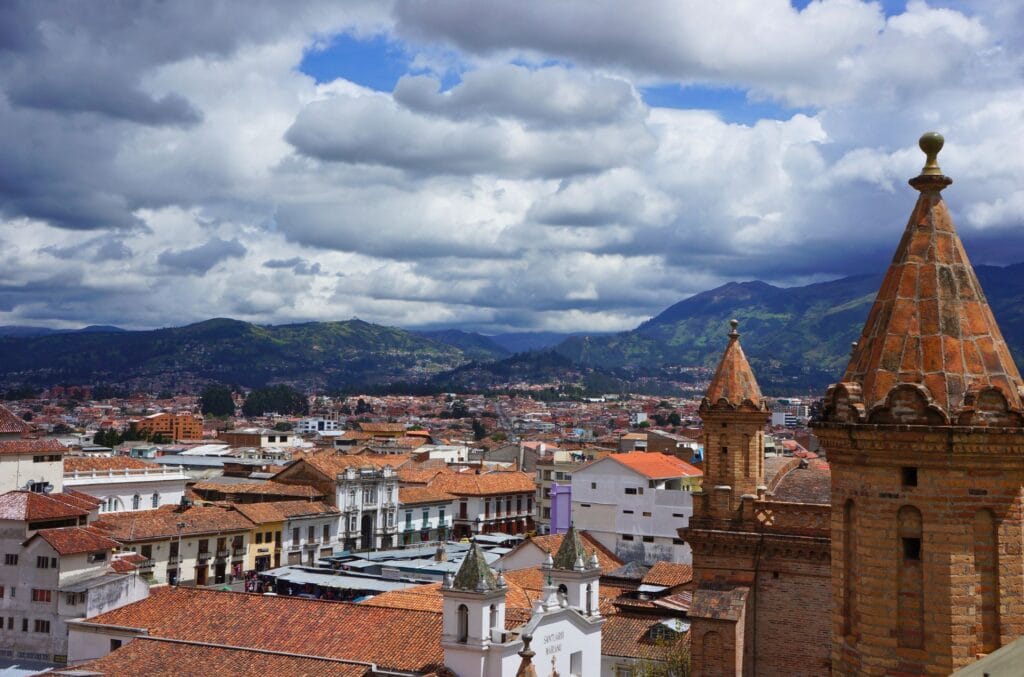
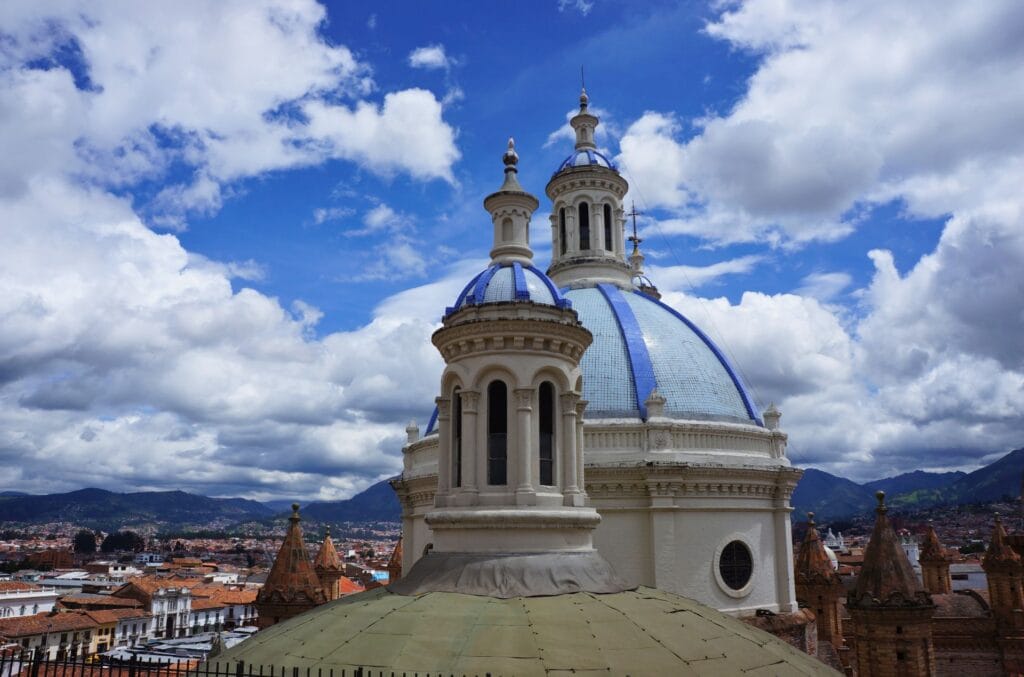
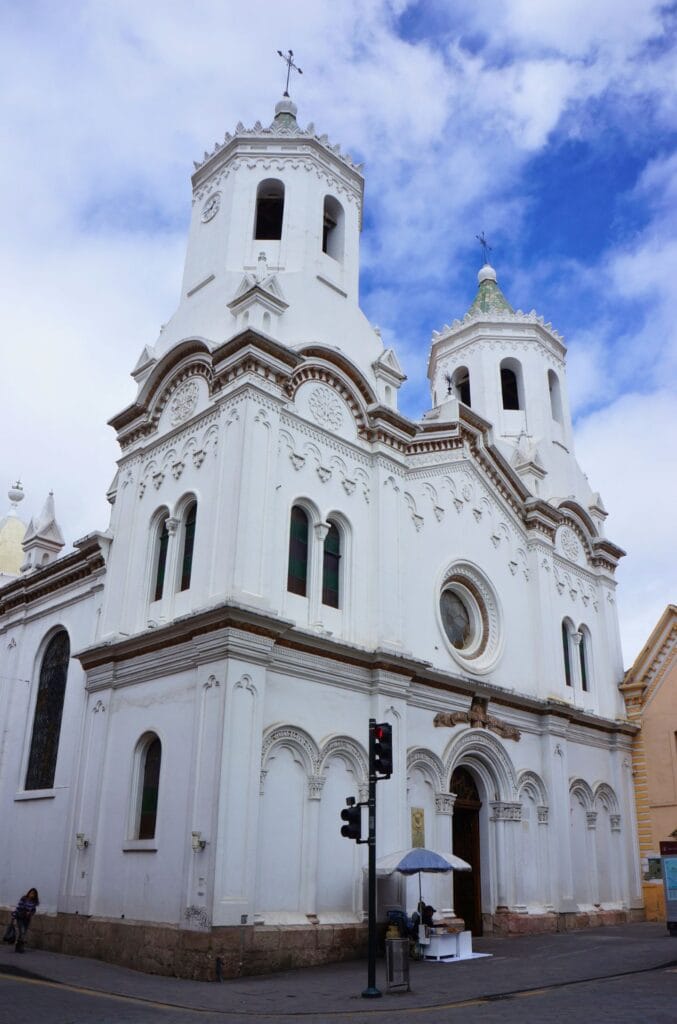
As we explained in the budget article, our big regret was not setting foot on these islands during our round-the-world trip...
To visit this Pacific Ocean archipelago, it is best to spend a minimum of 5 days on-site. The Galápagos spread over several dozen islands and islets. There are 3 inhabited islands: Isabela, Santa Cruz, and San Cristóbal.
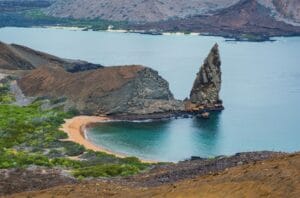
You have 2 ways to cover the approximately 1000 kilometers that separate the Galápagos from the coast: by a cruise or by air, that is, either an all-organized trip or on your own by taking day tours to visit the different islands.
Prefer a cruise? Find cruises starting from 800 dollars per person here. For tailor-made cruises in the Galápagos (and any trip or circuit in Ecuador), we recommend Evaneos, an agency that will advise you best for a dream stay in the archipelago. You can opt for all-inclusive or keep some freedom in your activities.
Prefer to organize your trip on your own? Here are the islands and their attractions to help you decide. Boats shuttle between the islands, and many 1-day activities will allow you to explore the surroundings.
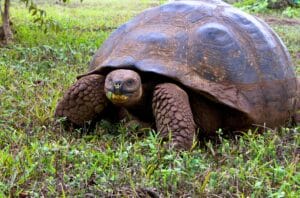
Santa Cruz is the most touristy island in the archipelago, and for a good reason, one of the two airports is located on the peninsula to the north!
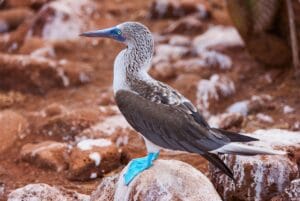
San Cristòbal is the cheapest island in the Galápagos. There are many beaches, snorkeling spots, and sunsets for the ages from Playa Mann and Playa Punta Carola, at the extreme east of the island.
Wilder, more volcanic, and much larger than its 2 big neighbors, this Galápagos island has several facets. On one side, you can almost tour one of the world's largest craters, that of the Sierra Negra volcano, and climb to the top of its "small" neighbor, the Chico volcano. On the other, you will be treated to beautiful beaches and cool snorkeling spots to observe diverse marine life: turtles, rays...
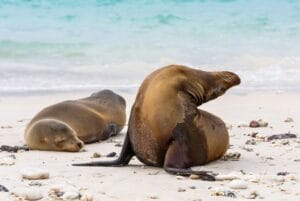
This article contains affiliate links to partner sites. When you use our links to book accommodation, a car, or an activity, you don’t pay anything extra, but we get a small commission. This helps us to offer you free, independent, and ad-free content. Thank you for your support!
Ecuador has 2 international airports: Mariscal Sucre Airport in Quito to the north and José Joaquín de Olmedo Airport in Guayaquil to the south. The price difference between the two from Europe is not significant, so your first step will essentially depend on your itinerary. Round-trip ticket prices hover around $900 in the low season and approximately $1200 for the high season (June to September). Feel free to compare prices; it might be cheaper to arrive in Quito and depart from Guayaquil (or vice versa).
To find cheap flights to Ecuador, we recommend comparing on Skyscanner and using the price alert system. This way, you'll be notified when prices drop.
Find your flight to Ecuador at the best price
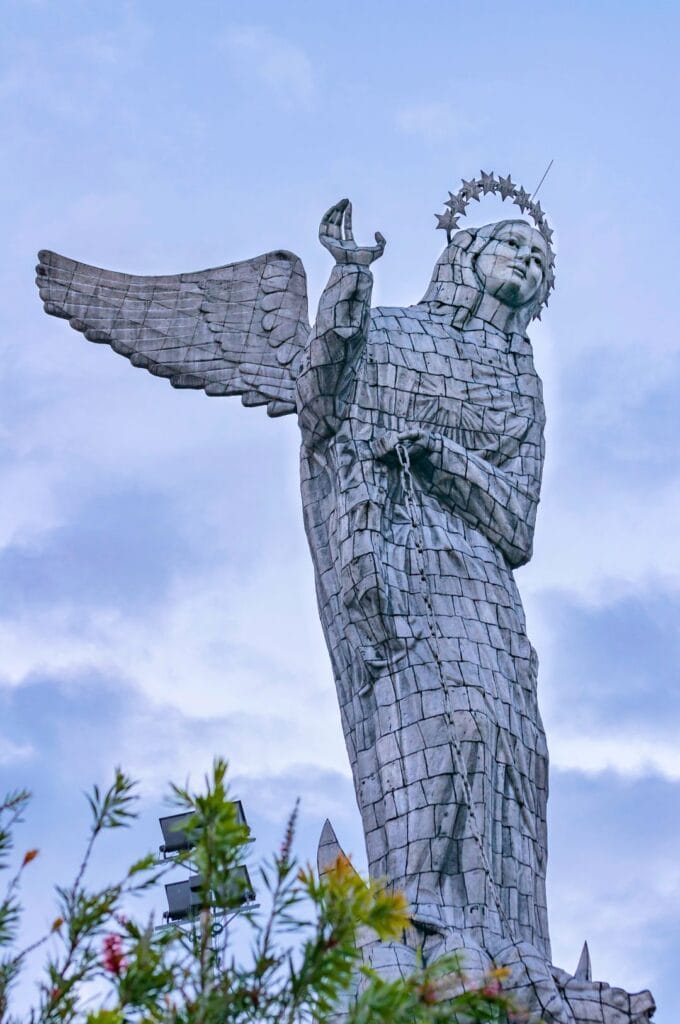
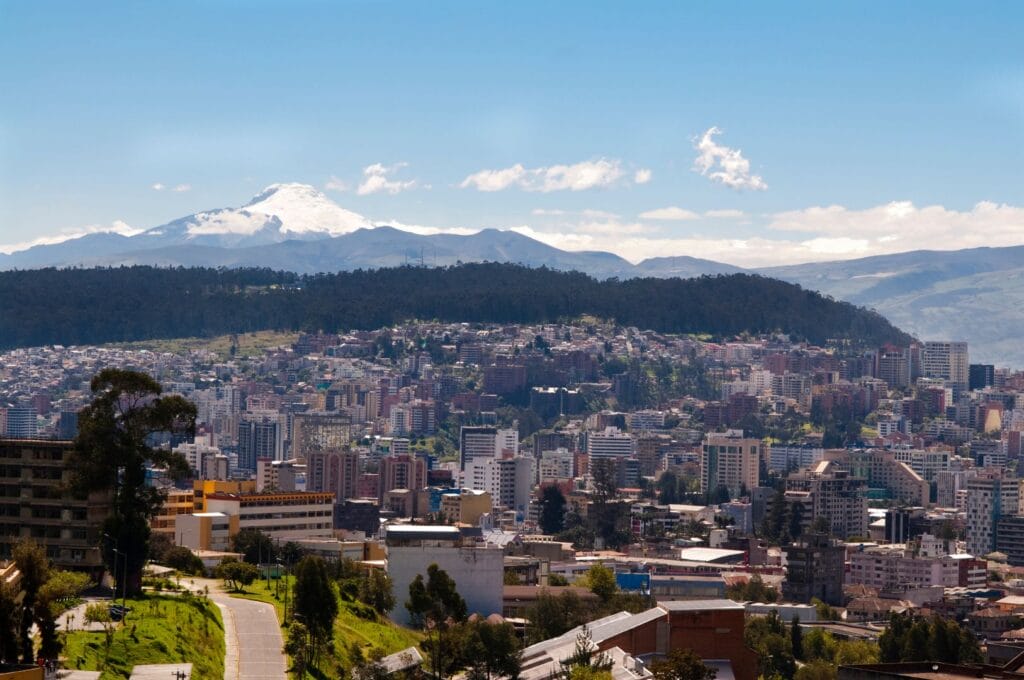
So, we organized everything ourselves, backpacker-style, and Ecuador is a great country for this mode of travel.
Ecuador's currency is the US dollar (USD). Yes, the United States' currency replaced the former national currency, the sucre, in 2000 following the country's recent inflations. The current exchange rate is 1 euro = 1.10 USD. Check the current rate before you leave!
This budget is a bit particular because we lived in Quito for 2 months, taking intensive Spanish courses before traveling for 1 month across Ecuador with backpacks. In total, we spent $4258 for 2 people, with a daily budget of $27.3 per person, including courses. However, today, you should revise this estimate upwards and have a travel budget of around $31 per day per person.
Another significant point is that we didn't have the chance to visit the Galápagos, but our budget would have been much higher if we had. For more details, check the dedicated budget travel article for Ecuador.
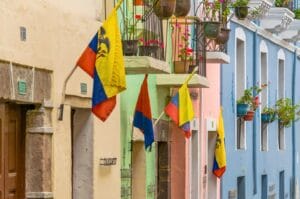
Honestly, we had a big crush on hostals and hosterias in Ecuador! Special mention for accommodations around Quilotoa Lagoon, charming small hotels, not very expensive, serving delicious meals. Except for the Quilotoa loop, we didn't specifically book hotels, but we were at the end of the low season. In July and August, it would be advisable to book, especially in cities and villages with limited accommodation options. Think particularly about the Amazon for lodges and the trek departing from Quilotoa. In Quito, it might be worth renting an entire apartment; they are sometimes priced similarly to a good hotel for a few nights! To find your next accommodation in Ecuador, we recommend comparing prices on the map just below. Enter your dates before applying the filters that suit you.
Good news! For French, Belgian, Swiss, and Canadian nationals, no visa is required for any stay in Ecuador less than 90 days! Just make sure your passport is valid for 6 months after entering Ecuador. You may also be asked for proof of leaving the country (your return ticket or a hotel reservation in a neighboring country may suffice).
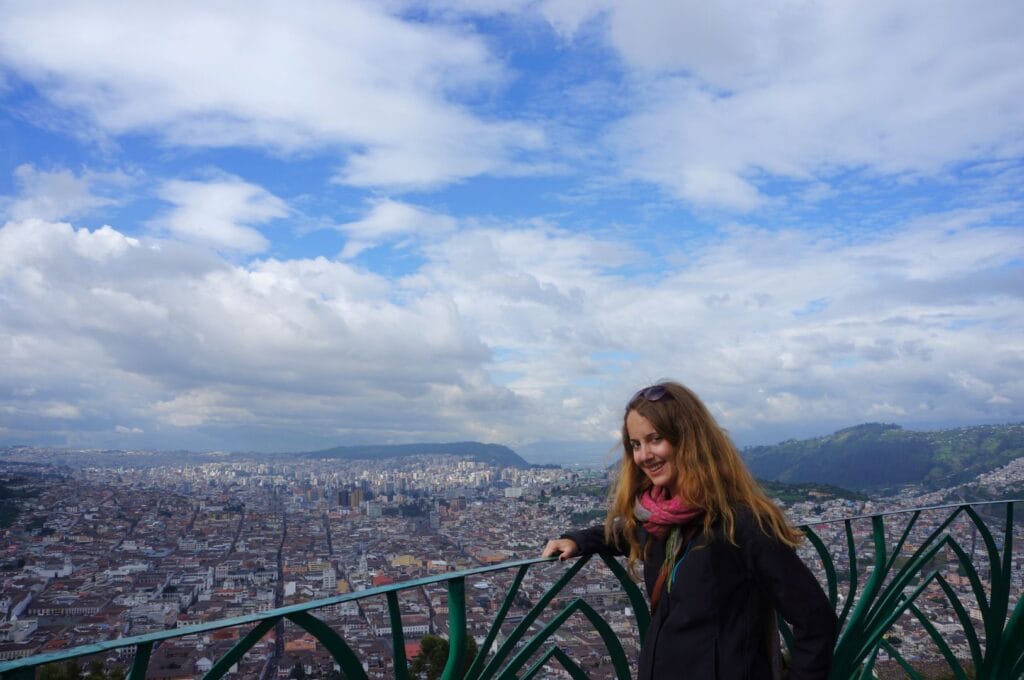
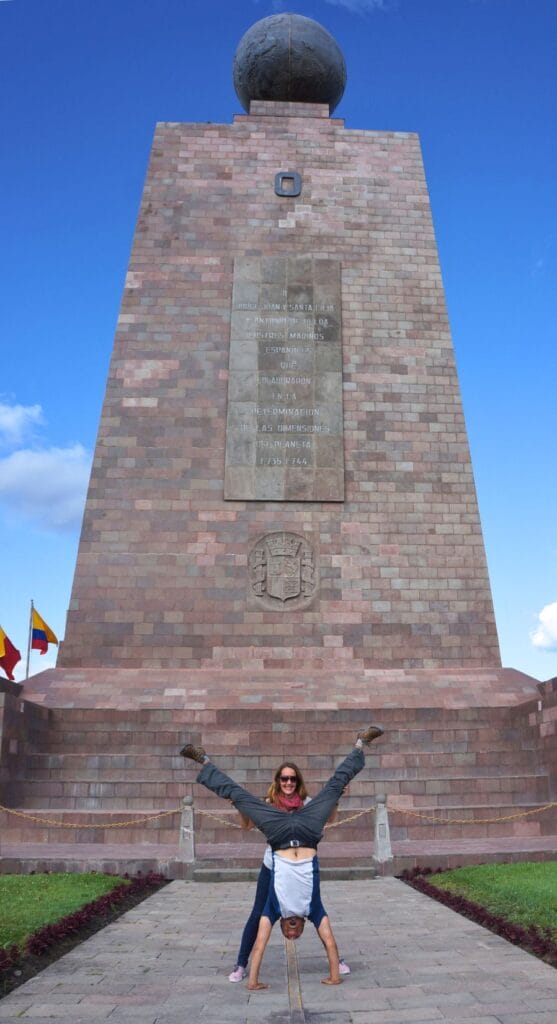
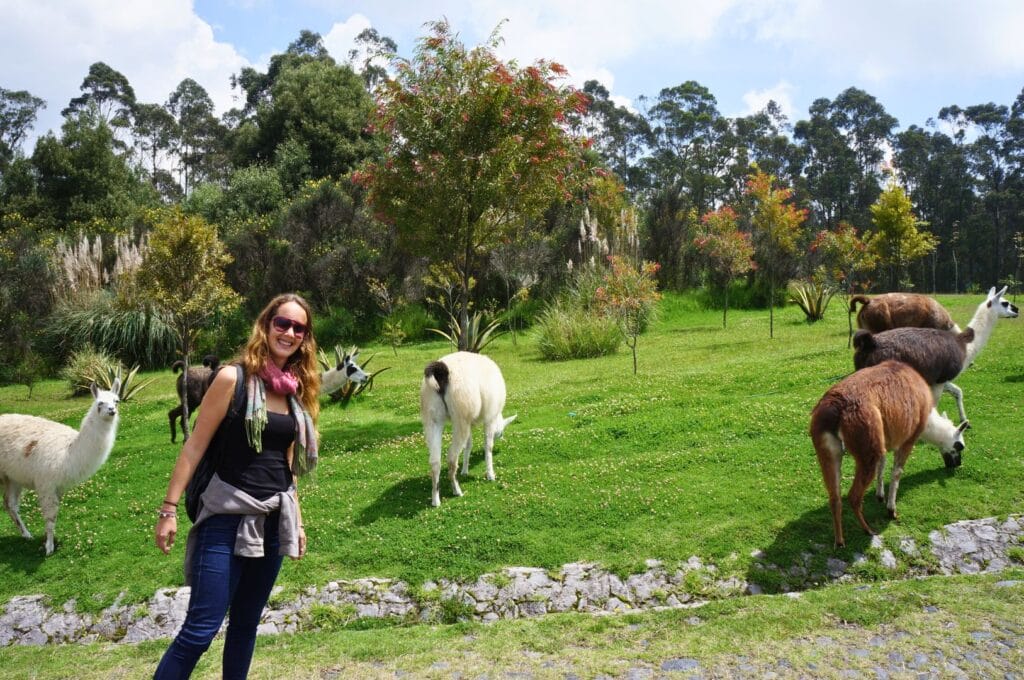
To stay in Ecuador for more than 90 days, you have the option to extend your tourist visa for an additional 90 days. To do this, you must go to an immigration services office before the end of your exemption. This will cost you a total of $136. You can fill out this form in advance.
To visit the Galápagos, you will need to present a transit card ($20/person) upon arrival, which you can obtain at the airports in Quito and Guayaquil or fill out online (tutorial) to save time (the line can be long).
In addition, you will have to pay an entry fee upon arrival in the Galápagos, $100 per person.
Note: Travel insurance is mandatory for travel to Ecuador. Without proof of insurance, you will not be allowed to enter the country.
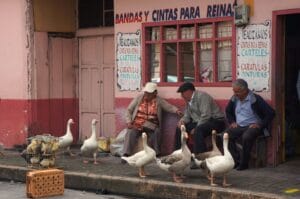
All COVID-19-related measures have been lifted for arrivals in Ecuador. We invite you to check the US embassy in Ecuador website for any updates on the situation.
For Ecuador, you won't need to go through the injection process! However, some vaccines are recommended:
Ecuador is one of the countries where malaria is prevalent... Only Quito, the Galápagos archipelago, and the Ecuadorian Andes are spared. A treatment can be considered to prevent the disease. It's best to consult directly with a specialist doctor.
Find all information related to vaccines for traveling to Ecuador on the website of the Centers for Disease Control and Prevention
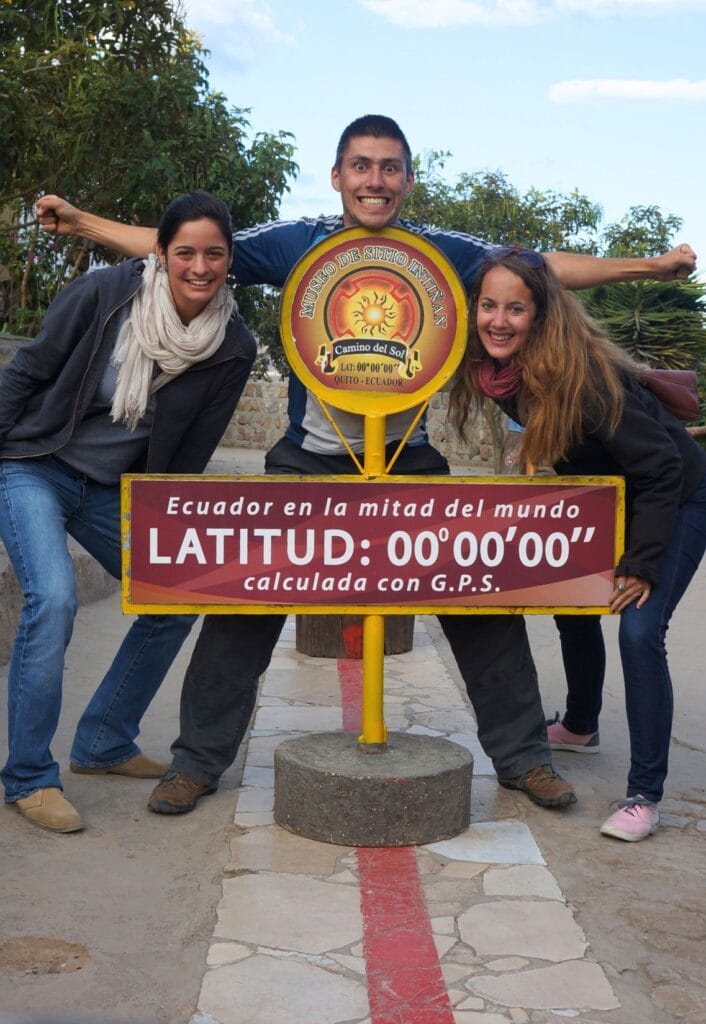
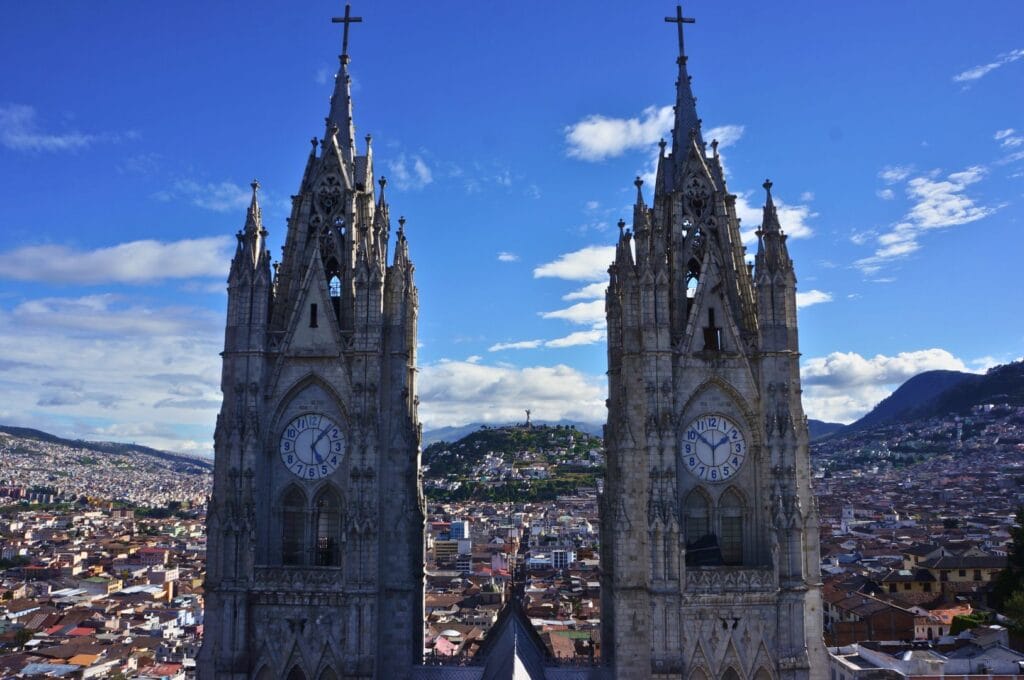
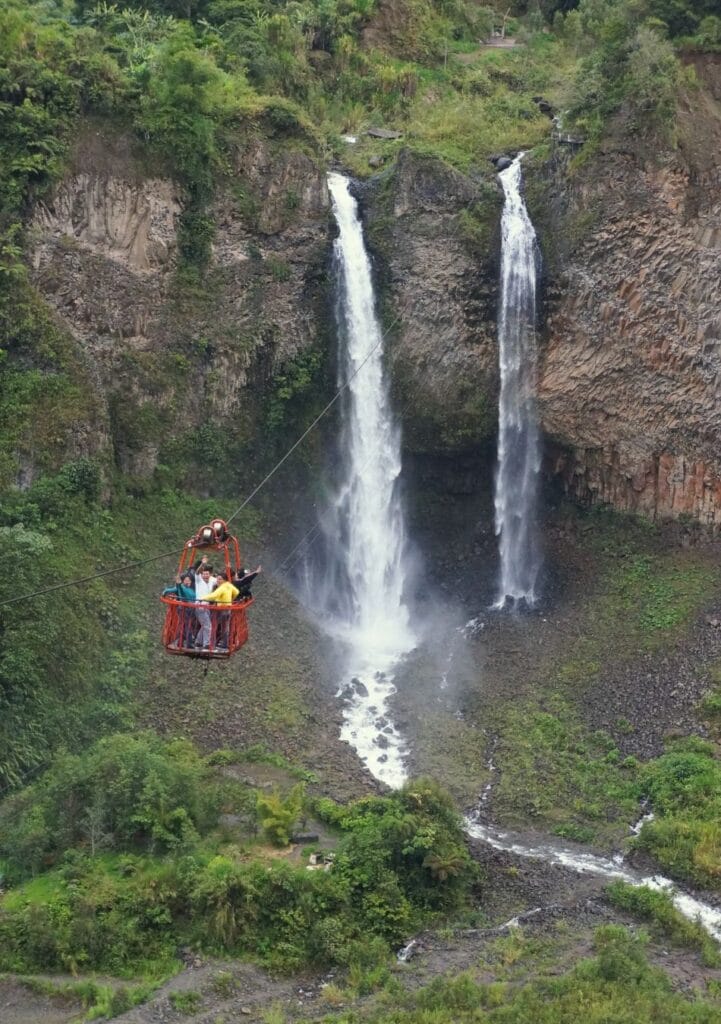
While we wouldn't recommend driving in Southeast Asian countries due to unpredictable local driving habits, Ecuador is a bit better. However, all parts of the country are well-served by buses, tickets are really cheap, and the roads are in very good condition. In short, everything is set up for you to take public transportation rather than bother with renting a car ;).
As mentioned above, bus lines cover all of Ecuador, and the roads are in good condition. Moreover, ticket prices are low, costing around $1-1.5 per hour of travel!
Getting around in Quito is also very simple thanks to the bus network and the metro that crosses the city from north to south.
Another means of transportation in the Ecuadorian capital is taking a taxi (make sure they use the meter) or an Uber.
For your bus journeys in Ecuador, you can book tickets online on 12go or Bookaway.
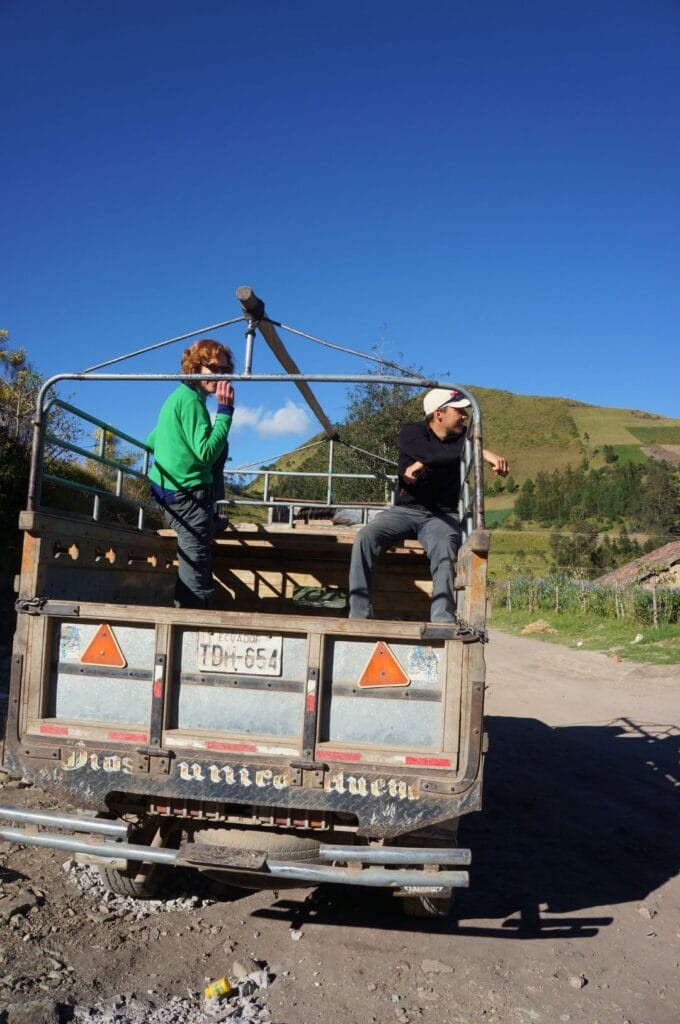
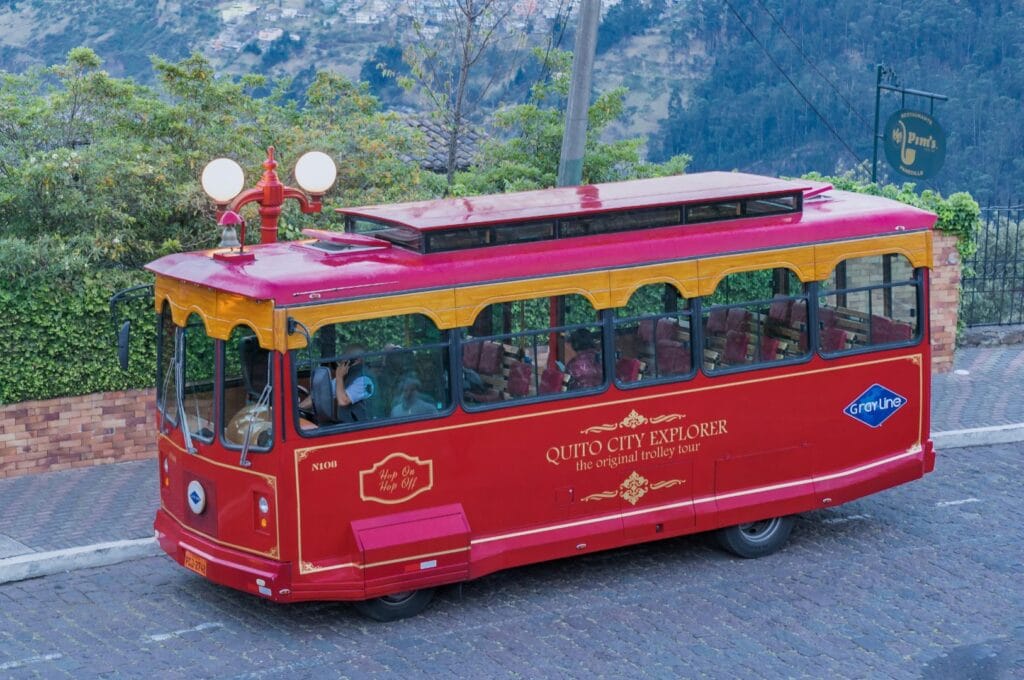
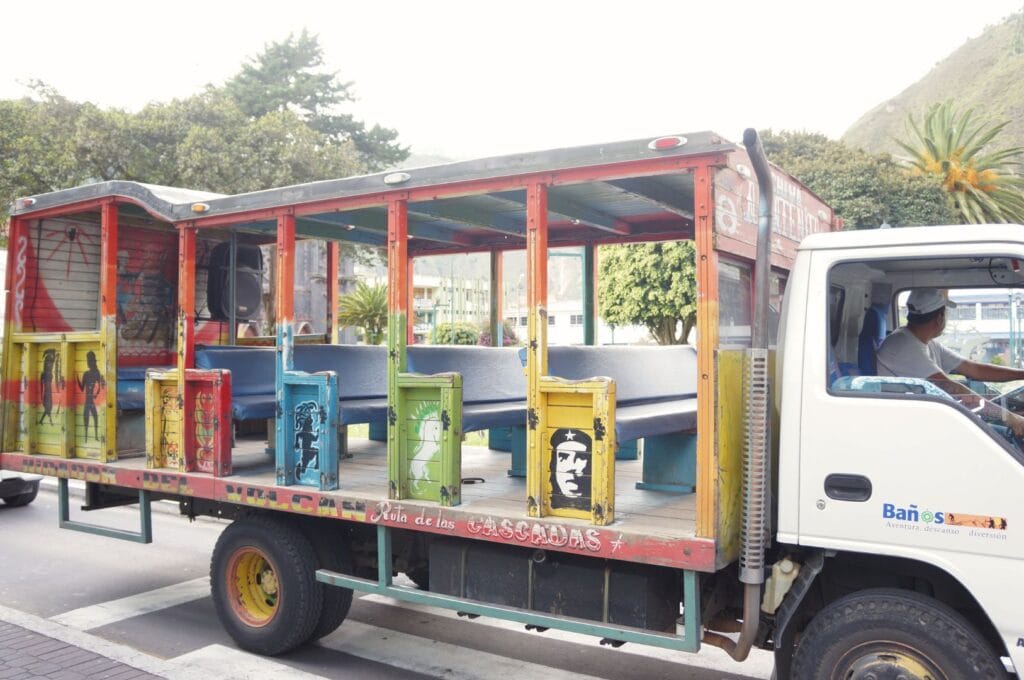
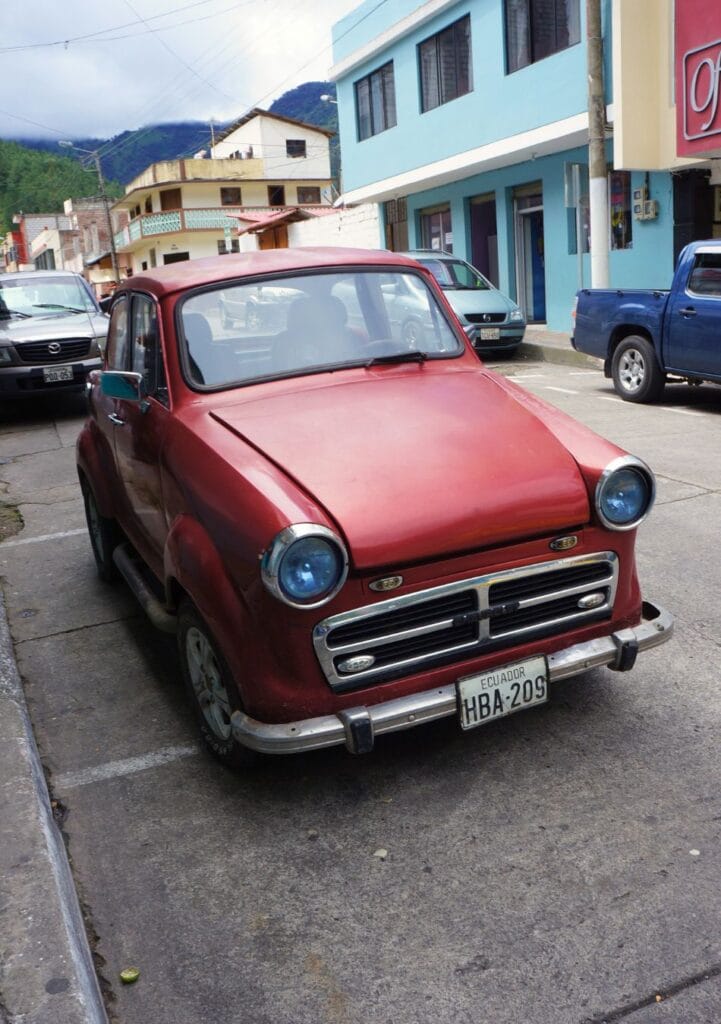
You'll likely read everywhere that Ecuador (and on a larger scale, South America) is unsafe, with constant incidents... In fact, Ecuador is not more dangerous than any other country. However, you need to follow a few rules to avoid any problems, especially pickpocketing. For instance, we spent 2 months in Quito, an unsafe city, and apart from an attempted theft of what was in my backpack, there were no problems! We simply followed the advice of locals and fellow travelers. Here are the safety rules, whether in Quito or the rest of the country:
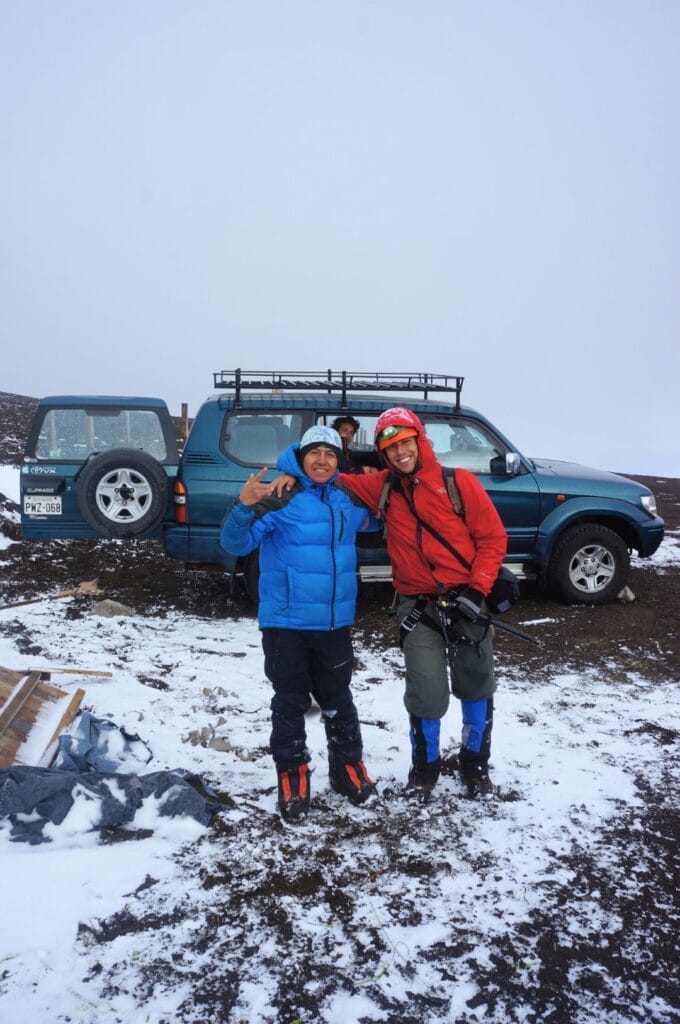
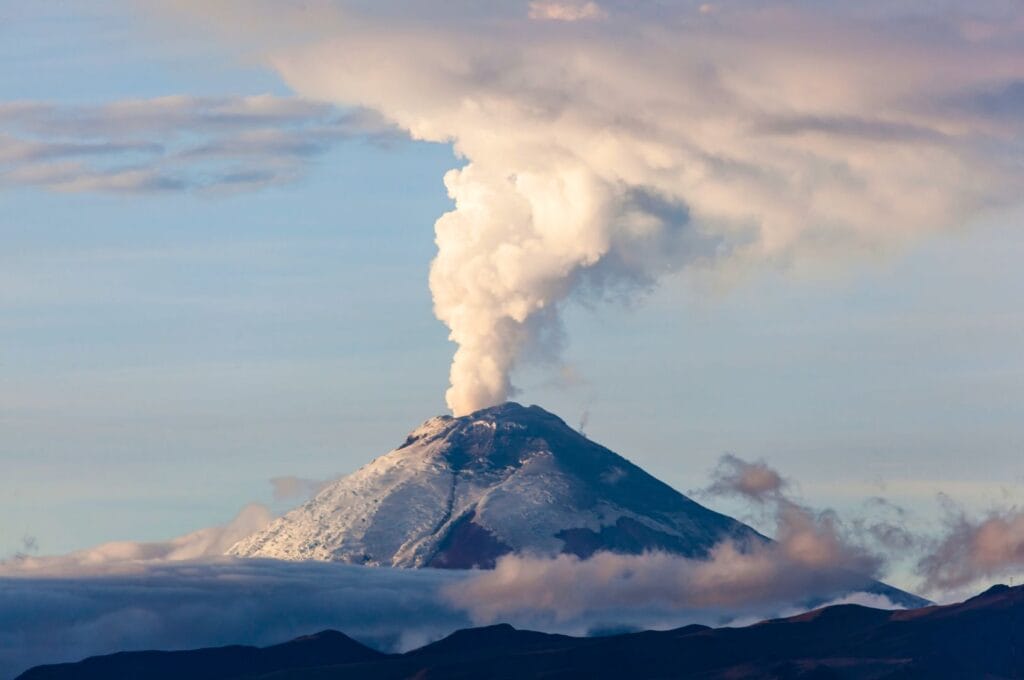
Due to its geographical position (the famous Pacific Ring of Fire), Ecuador is subject to significant natural phenomena: earthquakes, tsunamis, and eruptions. With 100 volcanoes and several dozen active ones, the volcanic risk is high!
Before and during your trip, inquire with locals and check the websites of the Ecuadorian Geophysical Institute and the Smithsonian Institution.
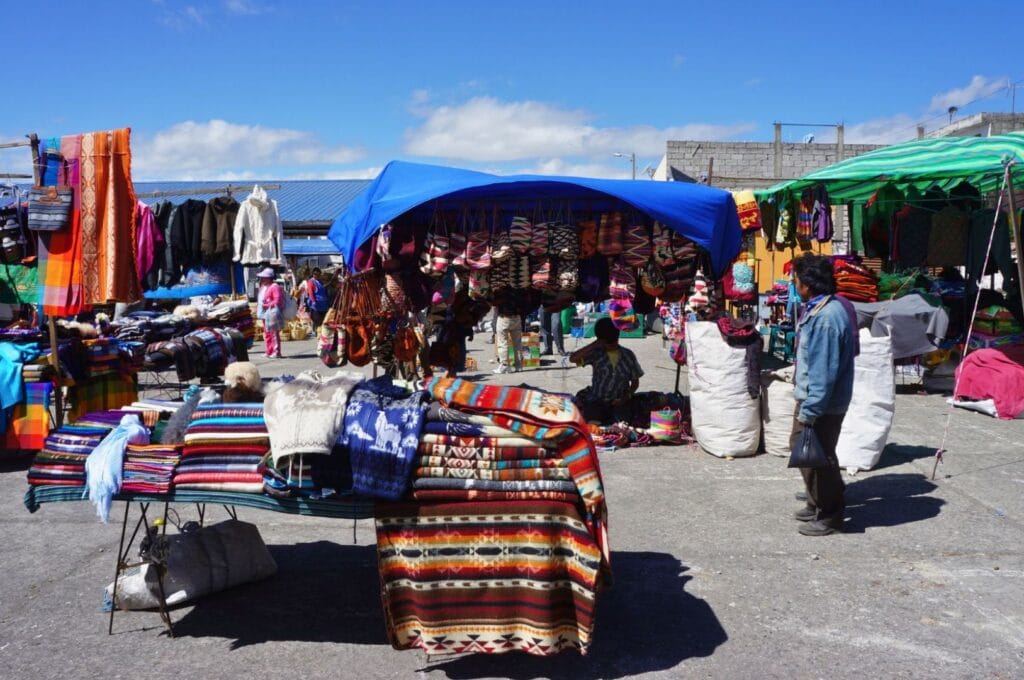
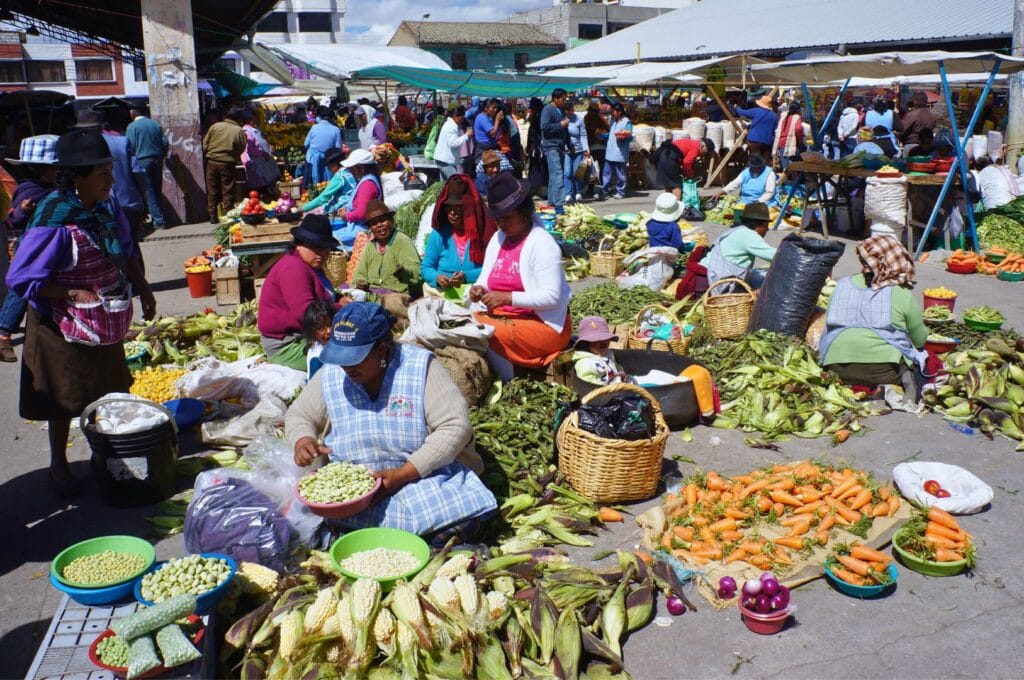
The country is not lacking in festivities. While most dates follow the Catholic calendar (90% of Ecuadorians practice this religion), other activities punctuate the year. Here is the schedule of the most important festivals in Ecuador:
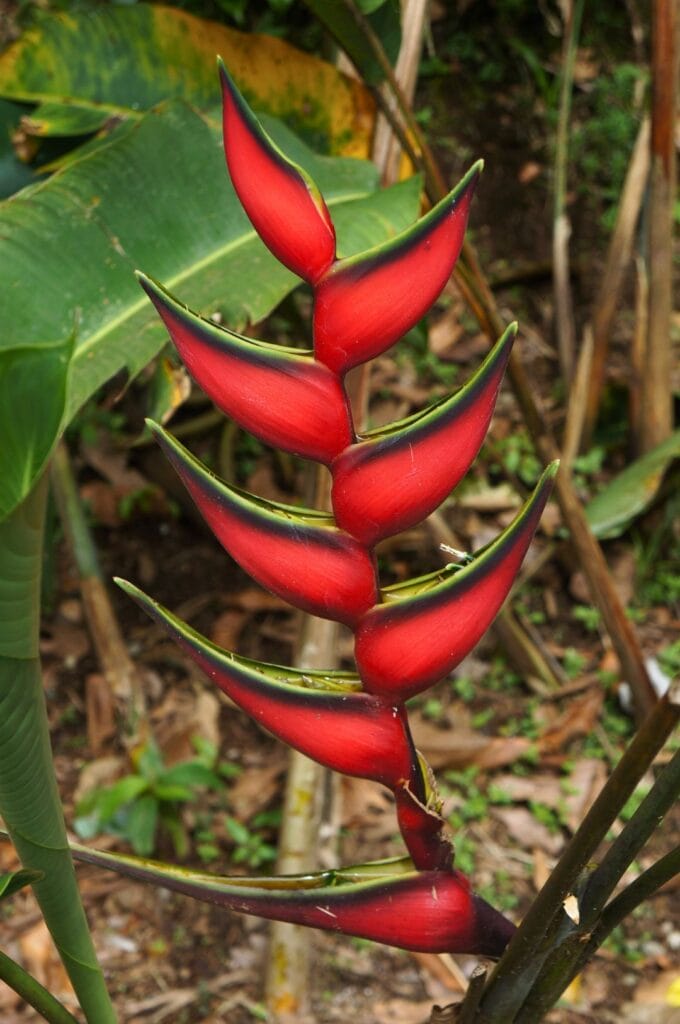
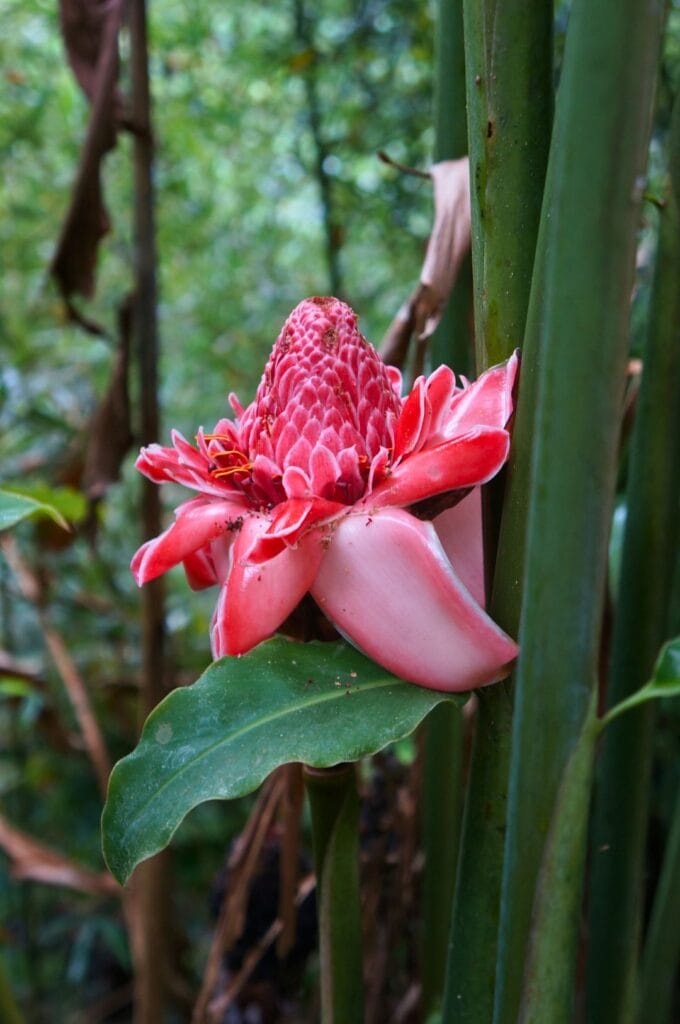
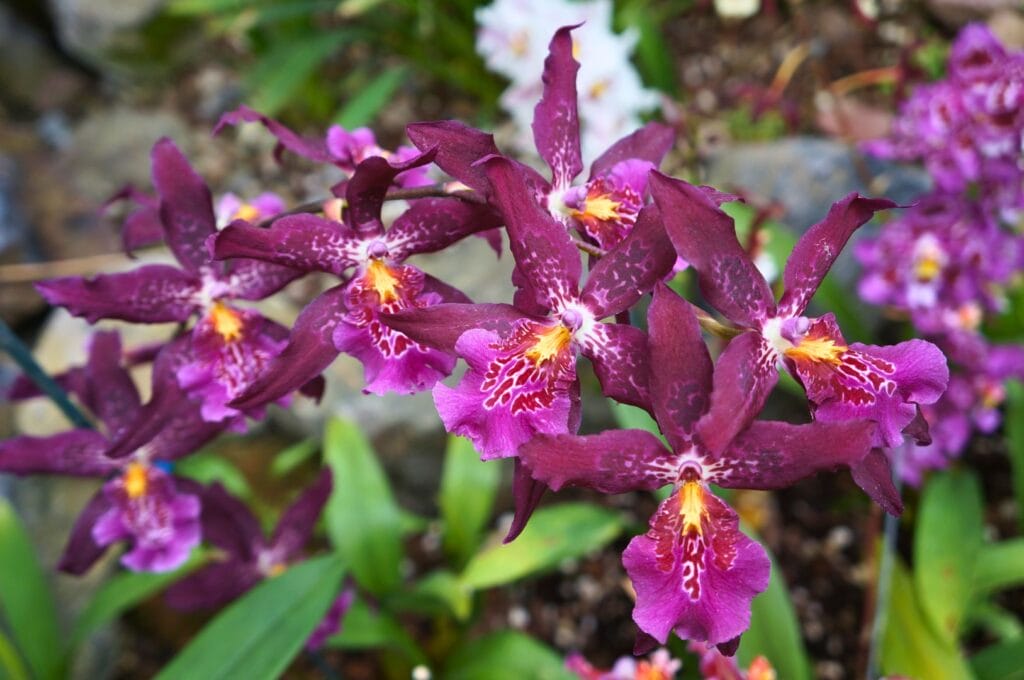
We won't hide it, we love the unique flavors of Asian cuisine. Dishes with coconut milk in Thailand, sticky rice in Laos, good Vietnamese pho, amok in Cambodia, Chinese dim sum, and fruits (oh my God!). In short, a delight at every moment!
So, it was with some apprehension that we changed continents and, at the same time, cuisine and eating habits. And the least we can say is that the shock was significant! Here are some facts we noted about Ecuadorian cuisine.
The first thing that surprises you when you arrive from Asia to Ecuador (or almost anywhere in South America) is that Ecuadorians are roughly the same size as Asians, but they don't have the same build. If we might have had some complexes in Asia, they vanished when we landed in Quito.
Like almost everywhere in the world, the combination of cheap fast food and physical inactivity wreaks havoc. But that's not the only factor; let's say that Ecuadorians have some eating habits that are a bit special for us Europeans.
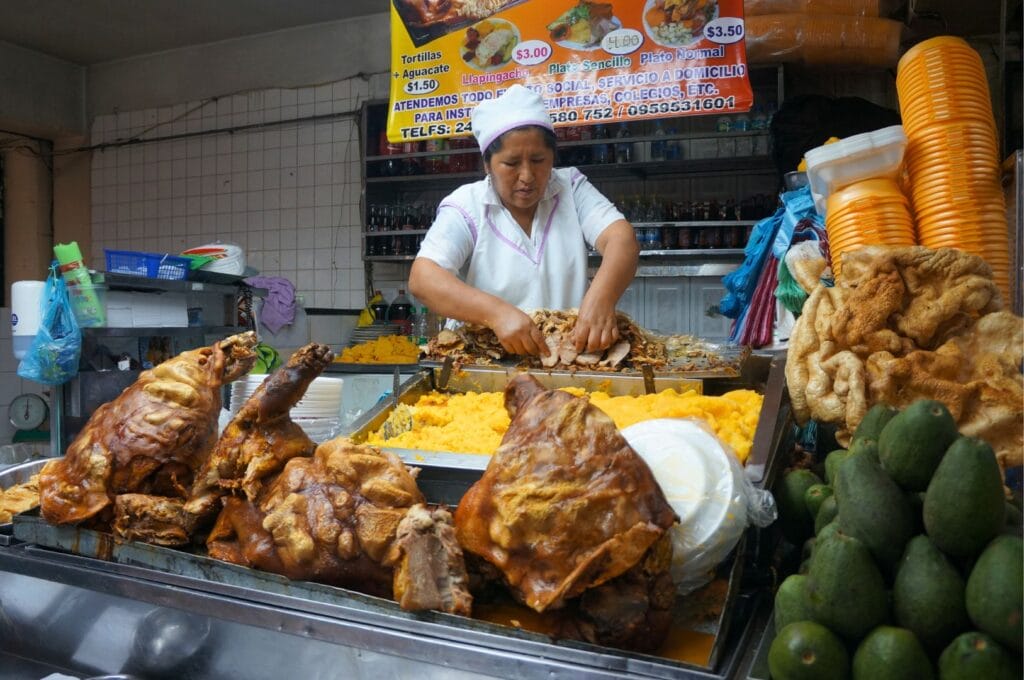
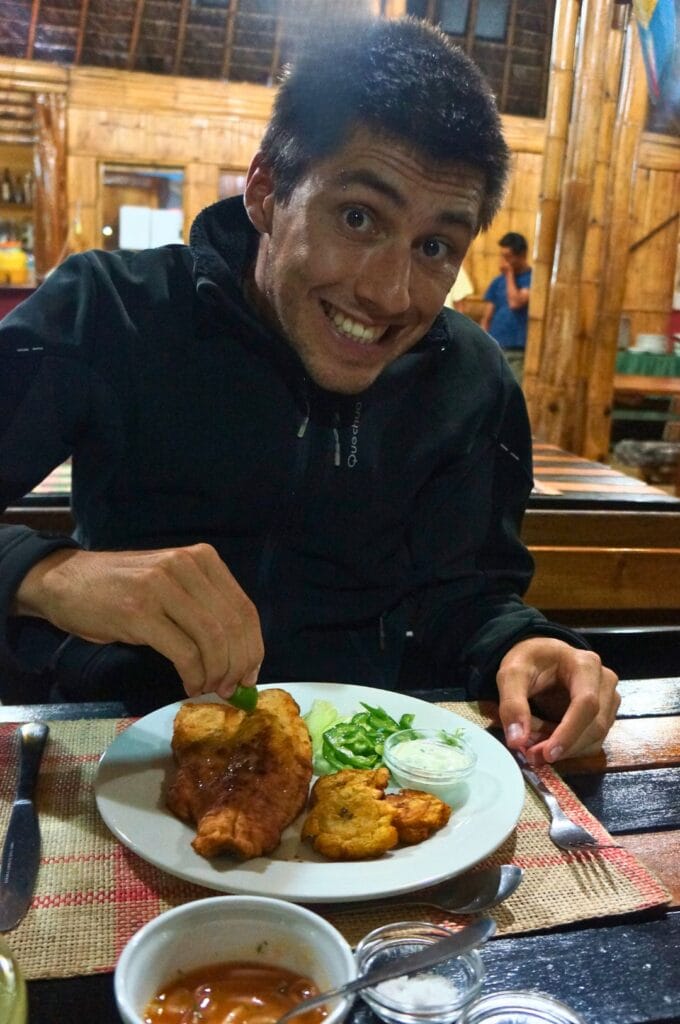
If you think you're good meat eaters, you'll quickly change your mind when you arrive here! Ecuadorians eat meat on average 1 to 2 times a day, but not just a small slice of 150 g! No! Sometimes, they order a parillada (Ecuadorian barbecue) and end up with almost 1 kg of all kinds of meat on the table. For a parillada for the two of us, we have enough meat for at least 2 weeks! Well, we were told that it depends a lot on the region, and on the coast, they mostly eat fish, seafood, crabs... But in the Andes, Ecuadorians are definitely true carnivores!
Speaking of meat, you can't miss cuy, which is nothing but... grilled guinea pig! Ecuadorians love it... We passed on it; let's say it's not the most visually appealing dish!

This is THE dish you can't miss in Ecuador (and Peru). Traditionally, ceviche consists of fresh raw fish served with lemon juice, onions, and chili, and accompanied by potatoes or large beans. On the Ecuadorian coast, this is probably what you'll get if you order ceviche. However, if you find yourself in the Andes (in Quito, for example), there's a good chance you'll receive a vegetarian version of ceviche! Yes, yes, you read that right. The most popular is undoubtedly chochos ceviche (although they obviously also have a chicken version)!
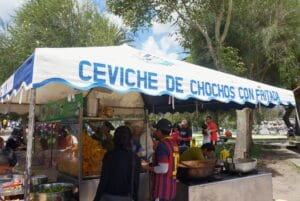
What's that? Well, it looks like big beans, but chochos are actually the seeds of the lupine, a plant we observed throughout our trek around Quilotoa Lagoon. It's a beautiful purple plant when it's in bloom, and so the crops in the mountainous regions of Ecuador are absolutely stunning.
We admit we're not big fans of chochos... But for $1 as street food, it's still worth trying once. And if you have a kitchen available, chochos ceviche is an easy recipe to prepare (we made ours at home in Quito!).
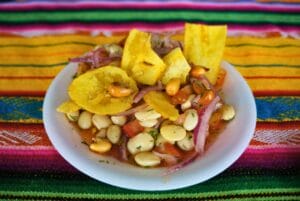
A typical Ecuadorian street food, fritada consists of pieces of boiled and then fried pork, accompanied by corn, plantains, rice, and/or potatoes.
Another national dish, sancocho is a soup (Ecuadorians really love soups and broths) made with cassava, corn, plantains, and rice. To this kind of broth, meat (lamb, chicken, or turkey) or fish (especially on the Pacific coast) is added.

It's THE lunch or typical menu of the day served in restaurants in Ecuador. The price is unbeatable, $2-5, and the majority of Ecuadorians have almuerzo at lunchtime. However, a traditional almuerzo in Ecuador is not a light meal... It consists of soup, a main course, a dessert, and fruit juice!
Every good almuerzo starts with a soup. OK, it's a good eating habit, but the downside is that in addition to chicken (or fish) and potatoes, there's popcorn! (They would do a version without now)
For the main course, Ecuadorians particularly enjoy mixing starches! It's quite normal for you to receive a plate with rice, fries, and more beans (not the green ones!). A small sacrilege for our European stomachs... The main course we have most often seen served in Ecuadorian restaurants for almuerzo is a plate of rice (the main food in the mountains) with potatoes (fried or not), a fried egg, a piece of chicken (fried or not), and a tiny bit of salad (just for show!). If you're not filled with that, then ;). In general, one complete almuerzo was enough for Fabienne and me. Let's say we didn't break the bank to eat in Ecuador!
Well, to complete all this, you have fruit juice as a drink (just that and the soup would have been enough for us!) and sometimes a dessert. It could be a piece of cake or a fruit salad... For the price, admit that it's worth it, right?
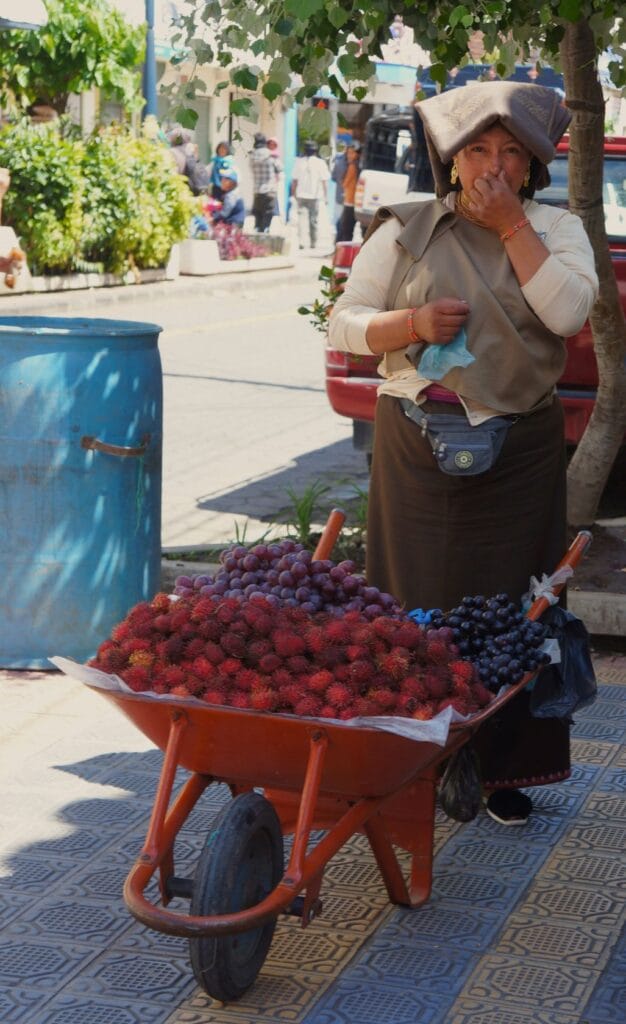
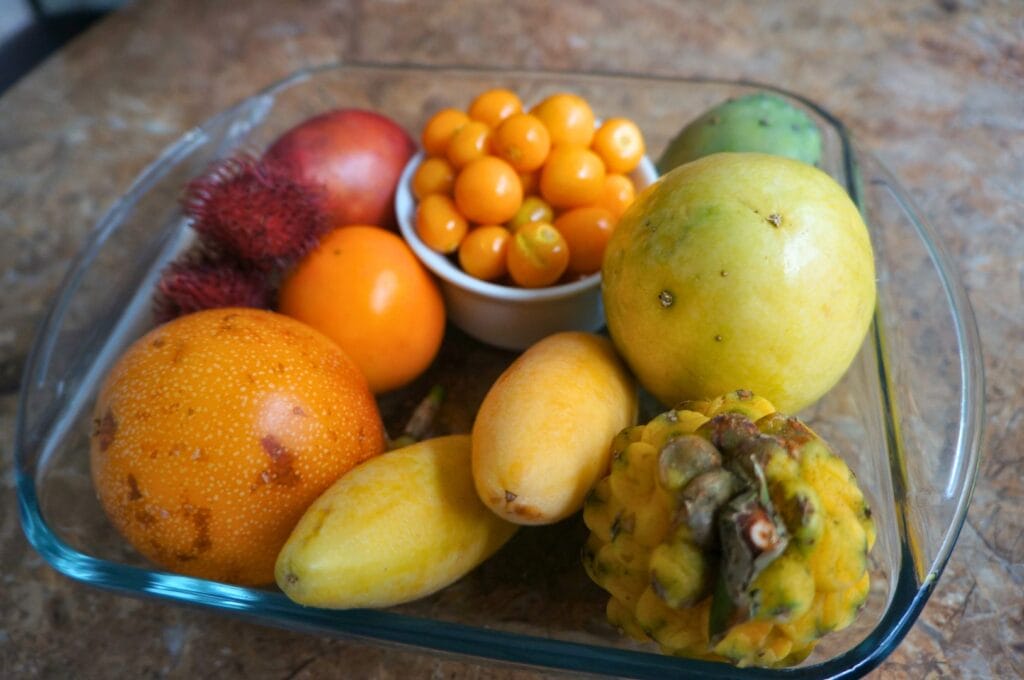
Now, this was THE pleasant surprise for us! Ecuadorian fruits are practically as flavorful as those in Asia, if not more so! Moreover, there were many we had never seen or tasted before. For instance, if I mention tree tomatoes, taxo, naranjilla, tuna, pitajailla, or granadilla, does it ring a bell?
So, during our 2 months in Quito, we treated ourselves to high-perfomance breakfasts with Ecuadorian fruits every morning. It was just perfect! And for that, it all happens in the markets. We found Ecuadorian markets cleaner and better organized than those in Asia. Additionally, the sellers aren't trying to scam you every 30 seconds. You'll also find a section of the market dedicated to dining, offering a variety of inexpensive and generally good dishes. It's an excellent alternative to the overly hearty restaurant almuerzos ;).
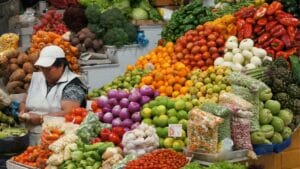
If you're a chocolate addict, Ecuador will not disappoint! The country is a significant exporter of cocoa, and some chocolates (such as Pacari and Kallari) made from Ecuadorian Amazon beans are consistently ranked among the world's best! We highly recommend strolling through the shops and indulging in a gourmet tour in Quito or Mindo.
We also recommend trying this at least once during your trip! Canelazo is the typical Ecuadorian drink, a deliciously warm blend of sugarcane alcohol, cinnamon, and sugar. Beware, it's sweet but strong, so prefer enjoying it in the late afternoon ;).
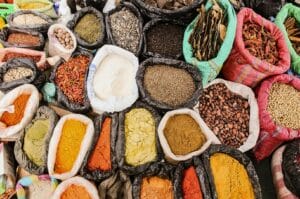
No, we're not talking about tobacco here, but rather chicha, another characteristic Ecuadorian beverage dating back to the Inca era. This concoction results from the fermentation of grains (rice, quinoa, corn) or tubers (cassava), combined with nuts, fruits, and spices. Don't hesitate to taste it in different regions where the recipe varies.
You'll find Wifi connections almost everywhere in the country. So, in our opinion, it's not necessarily worth getting a SIM card in Ecuador, especially if you plan to travel by public transport (no need for GPS).
Don't forget that there is a 6-hour time difference in Ecuador compared to France and 7 hours with the Galápagos in winter. Otherwise, there's one more hour less than in France during daylight saving time.
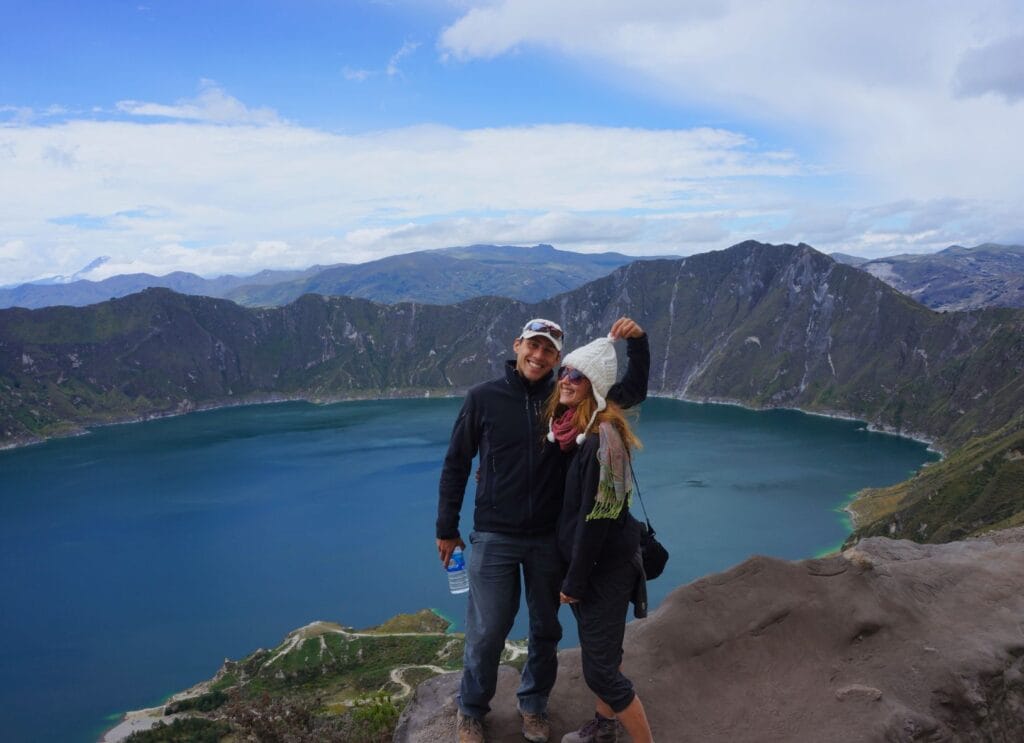
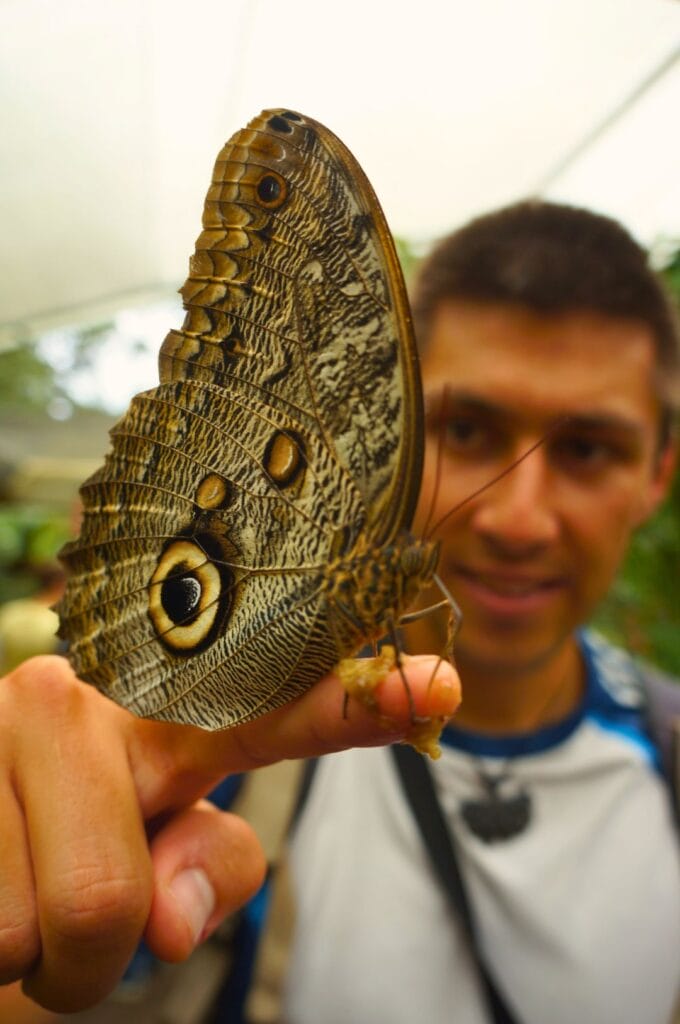
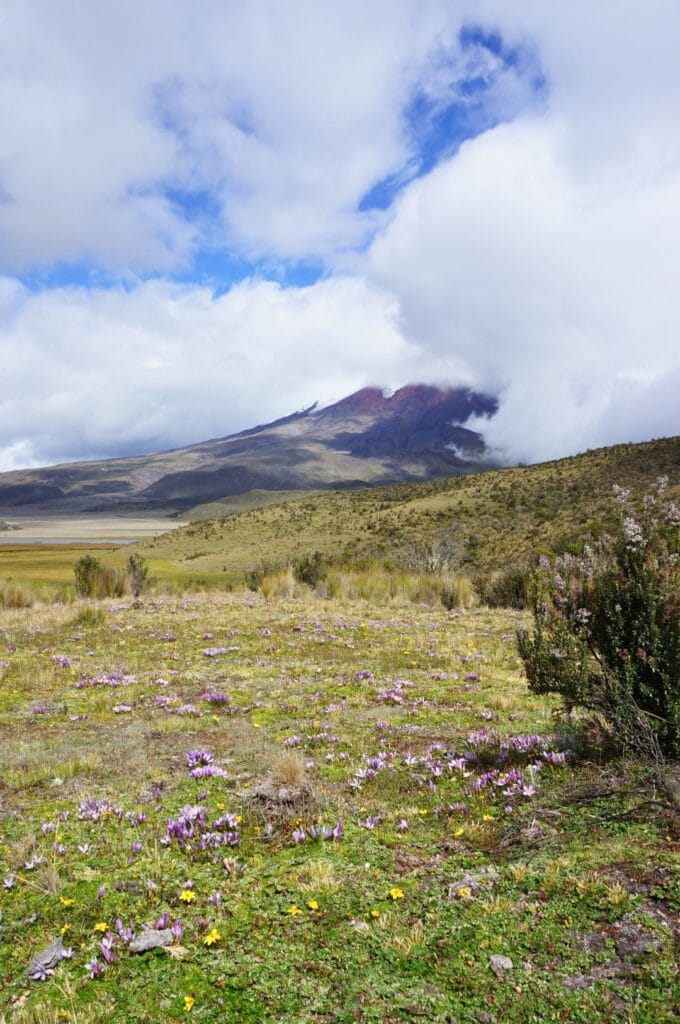

0
Spanish courses, accommodation, transport, food and everything you need to know about the travel costs and the budget for backpacking in Ecuador!
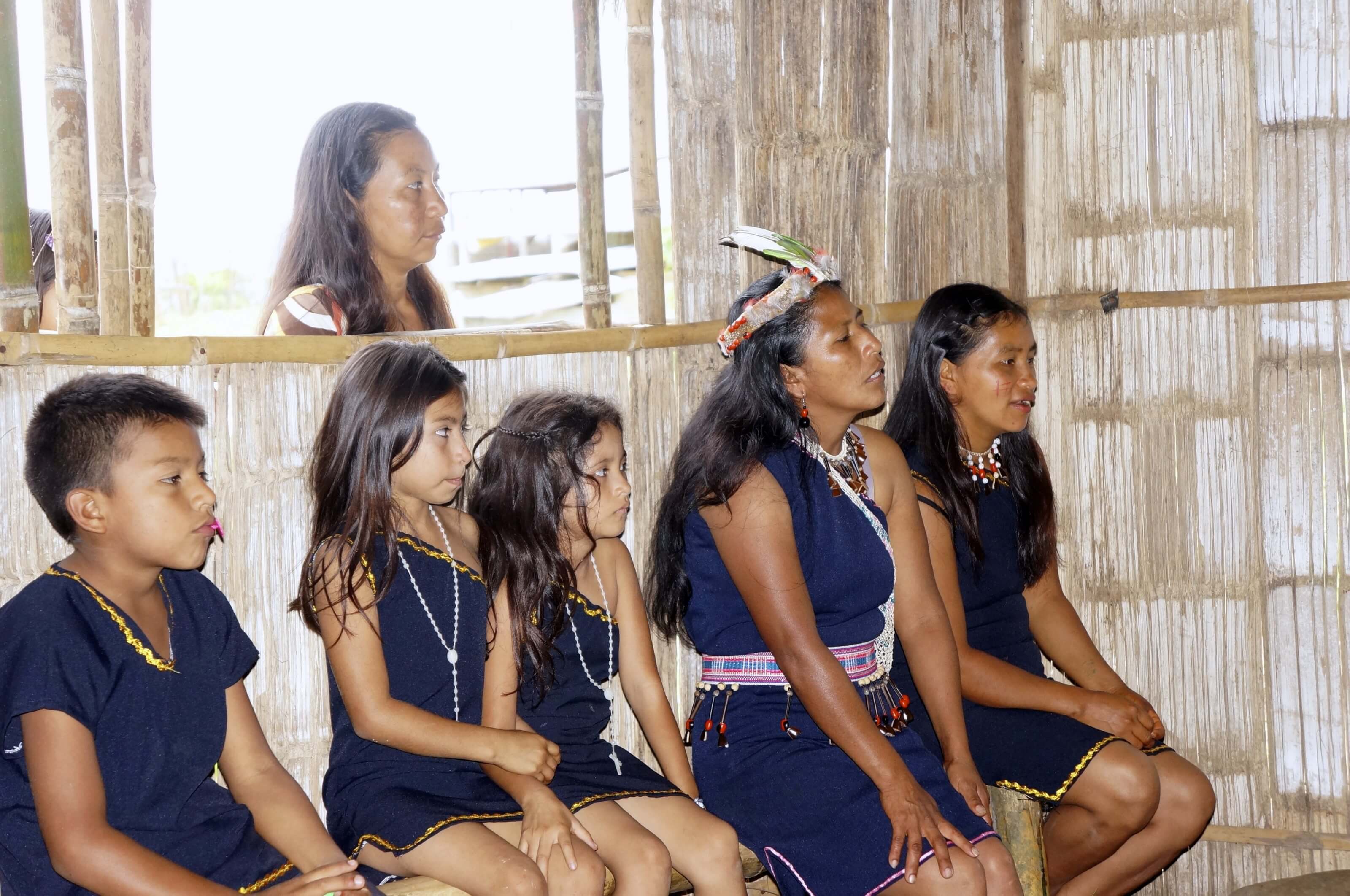
0
The Ecuadorian Amazon is a veritable natural wonderland, with its unique flora and fauna. We'll help you plan your next visit to the jungle!
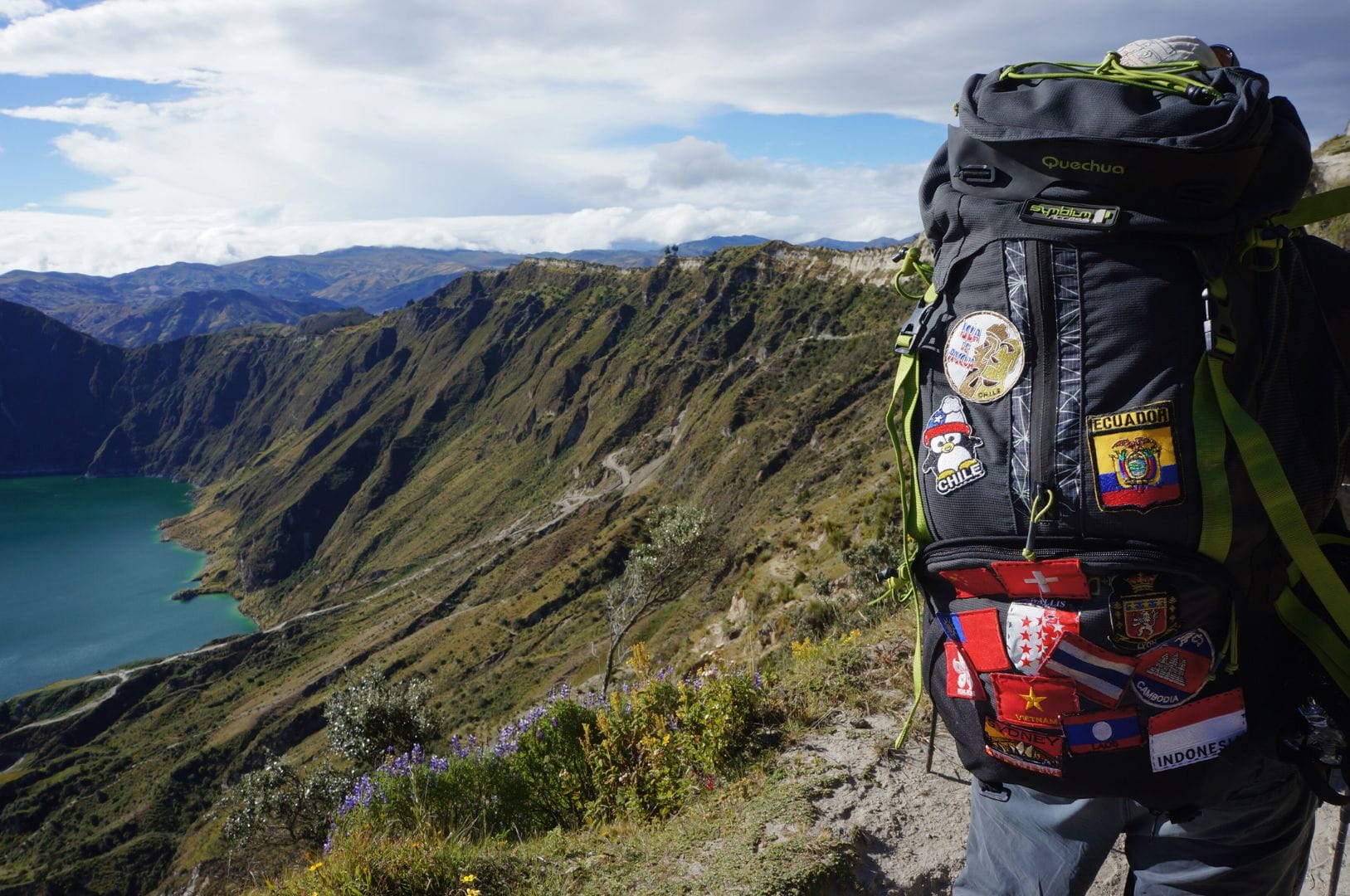
0
This 4-day trek to the Quilotoa lagoon in Ecuador is probably one of our most beautiful round-the-world treks. Find out all our tips for a successful Quilotoa Loop!
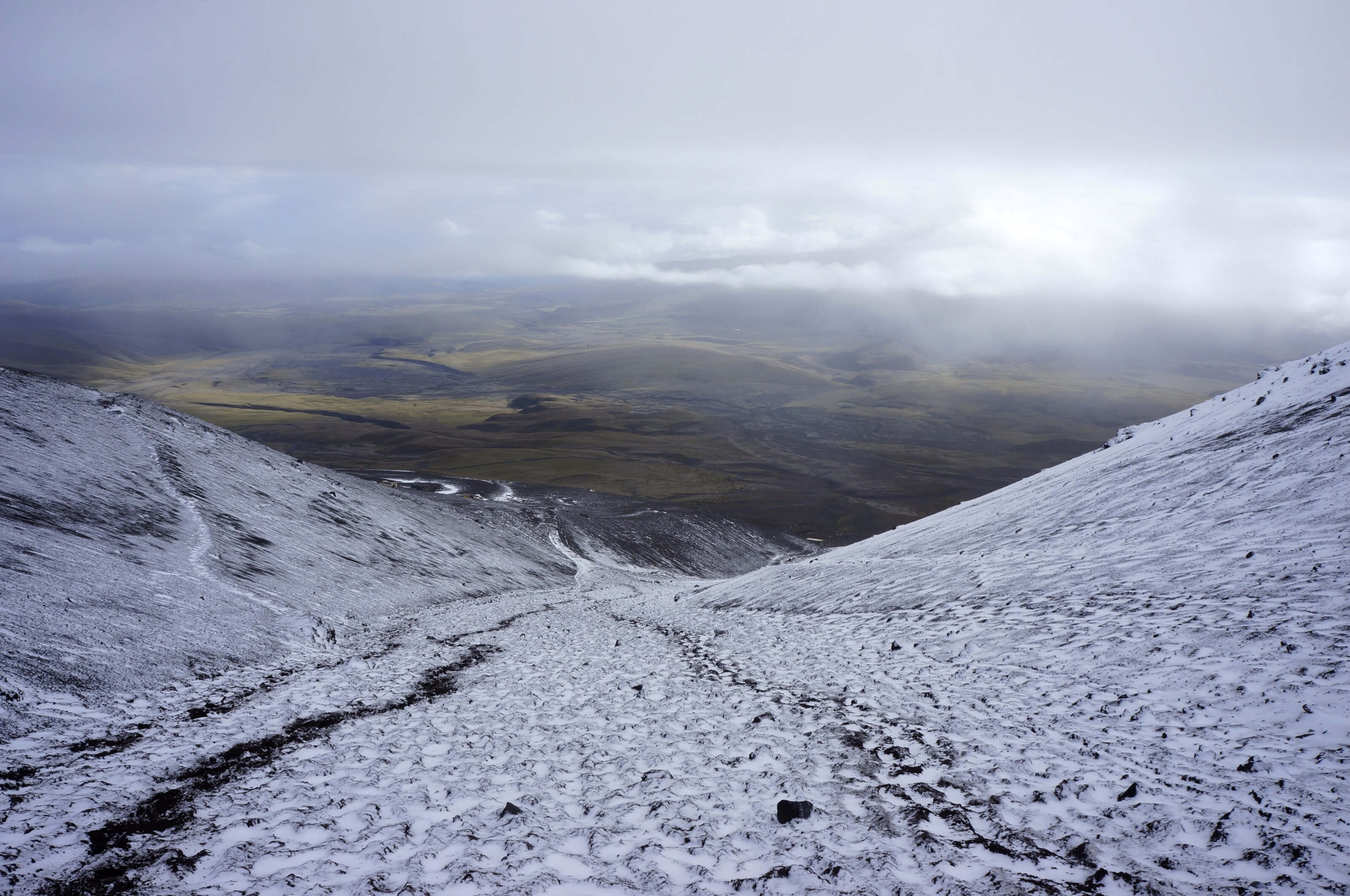
1
The trek on the Cotopaxi volcano within the eponymous national park left me with lasting memories during our trip to Ecuador. Find all our hiking tips!
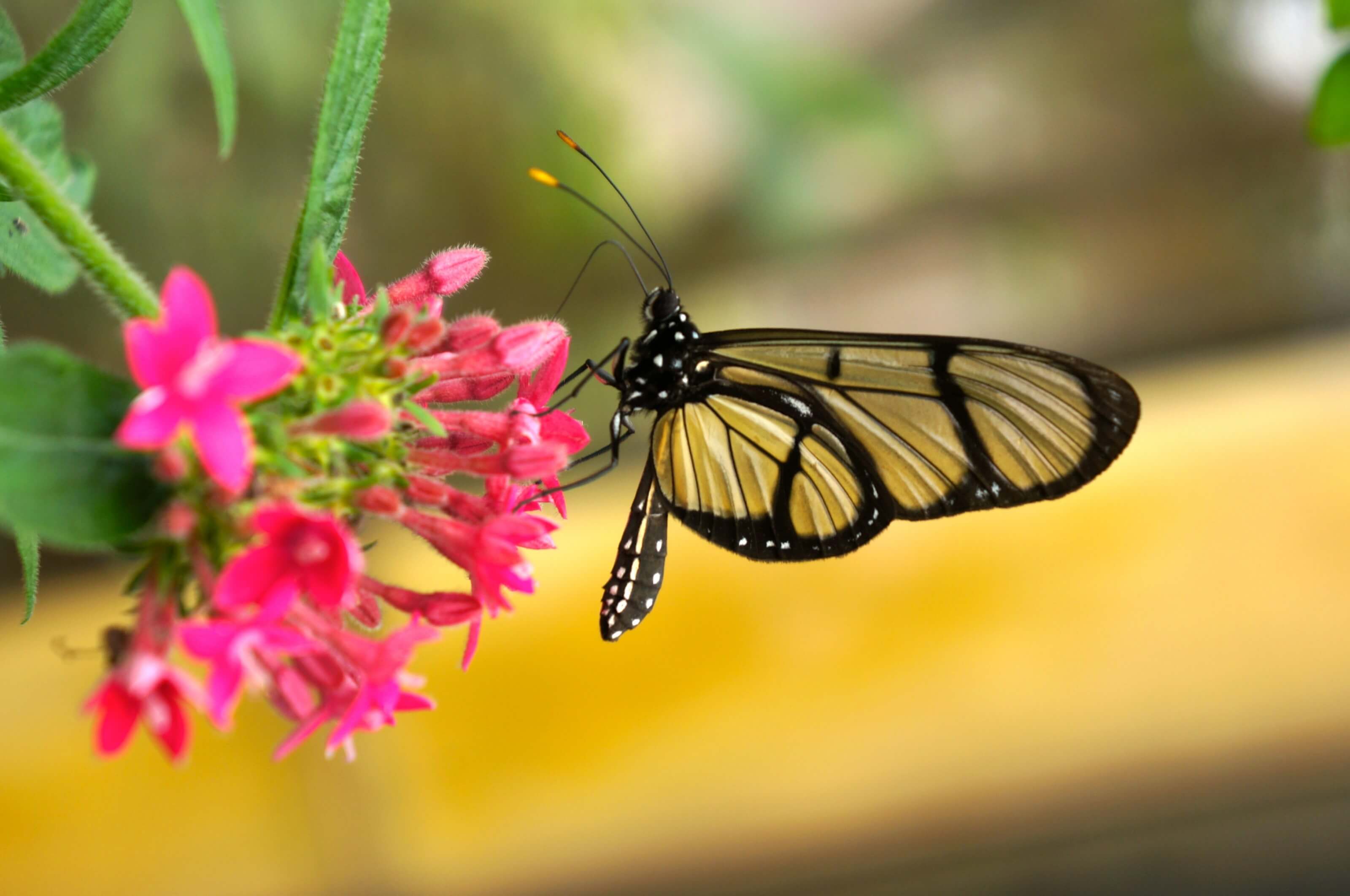
0
It's off for a day trip from Quito to Mindo! Change of scenery with Ecuador's most beautiful butterflies and the waterfall sanctuary!
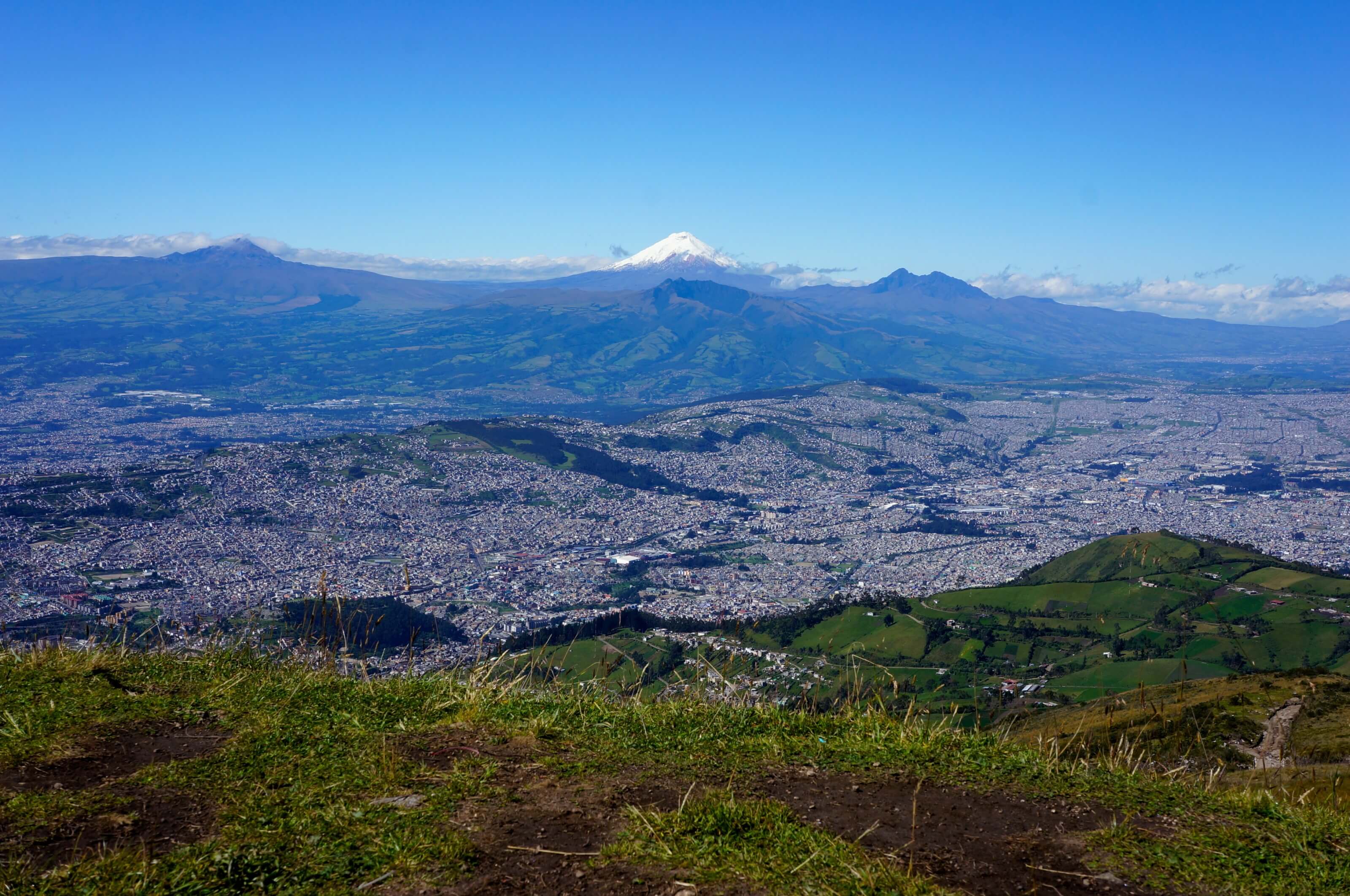
3
During our 2-month language study vacation in Quito, we had more than enough time to visit every corner of Ecuador's capital. Read our travel guide!
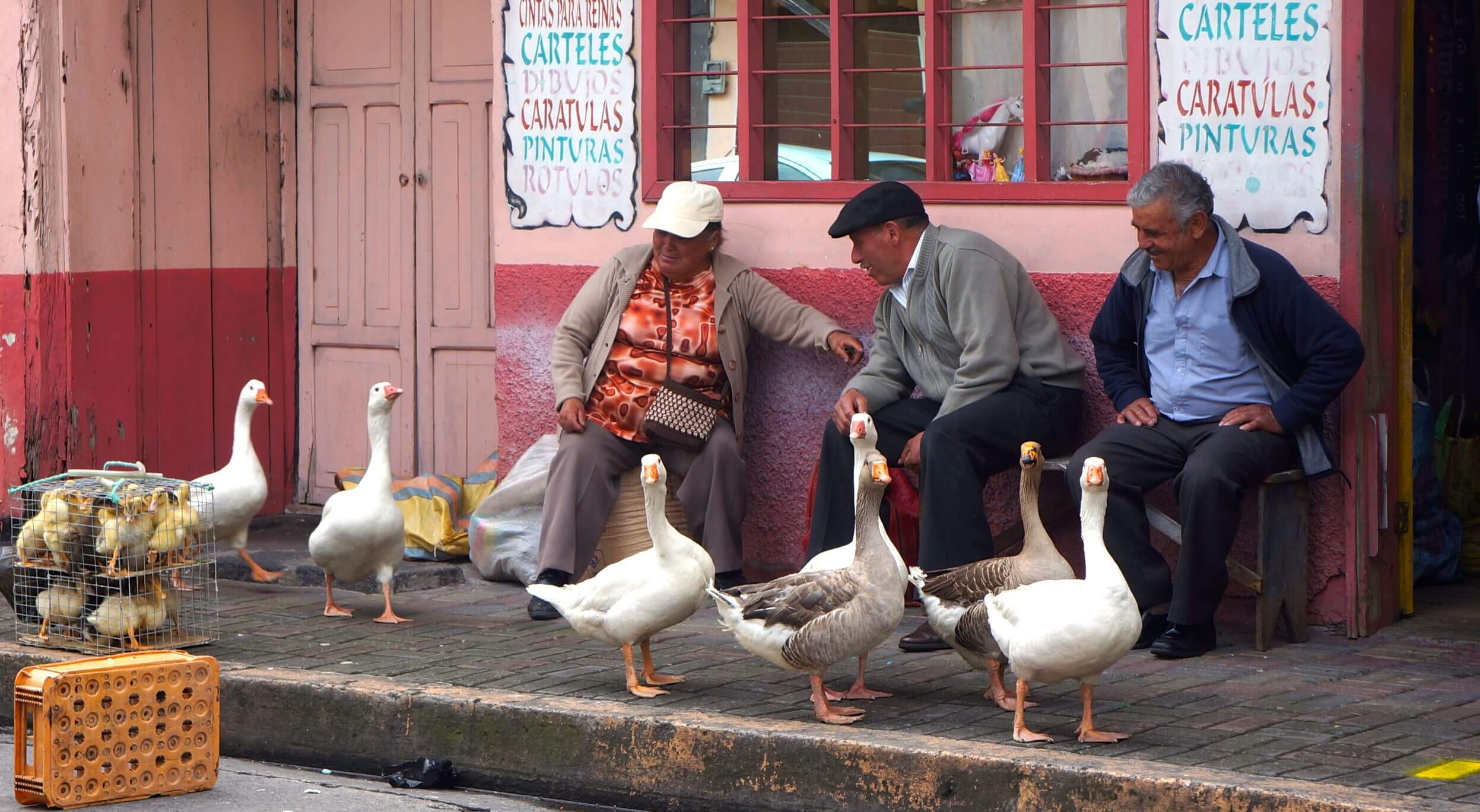
0
Located a few hours south of Quito, Baños is a very surprising town between the waterfall route, a volcano at an altitude of more than 5000 m and extreme sports galore!
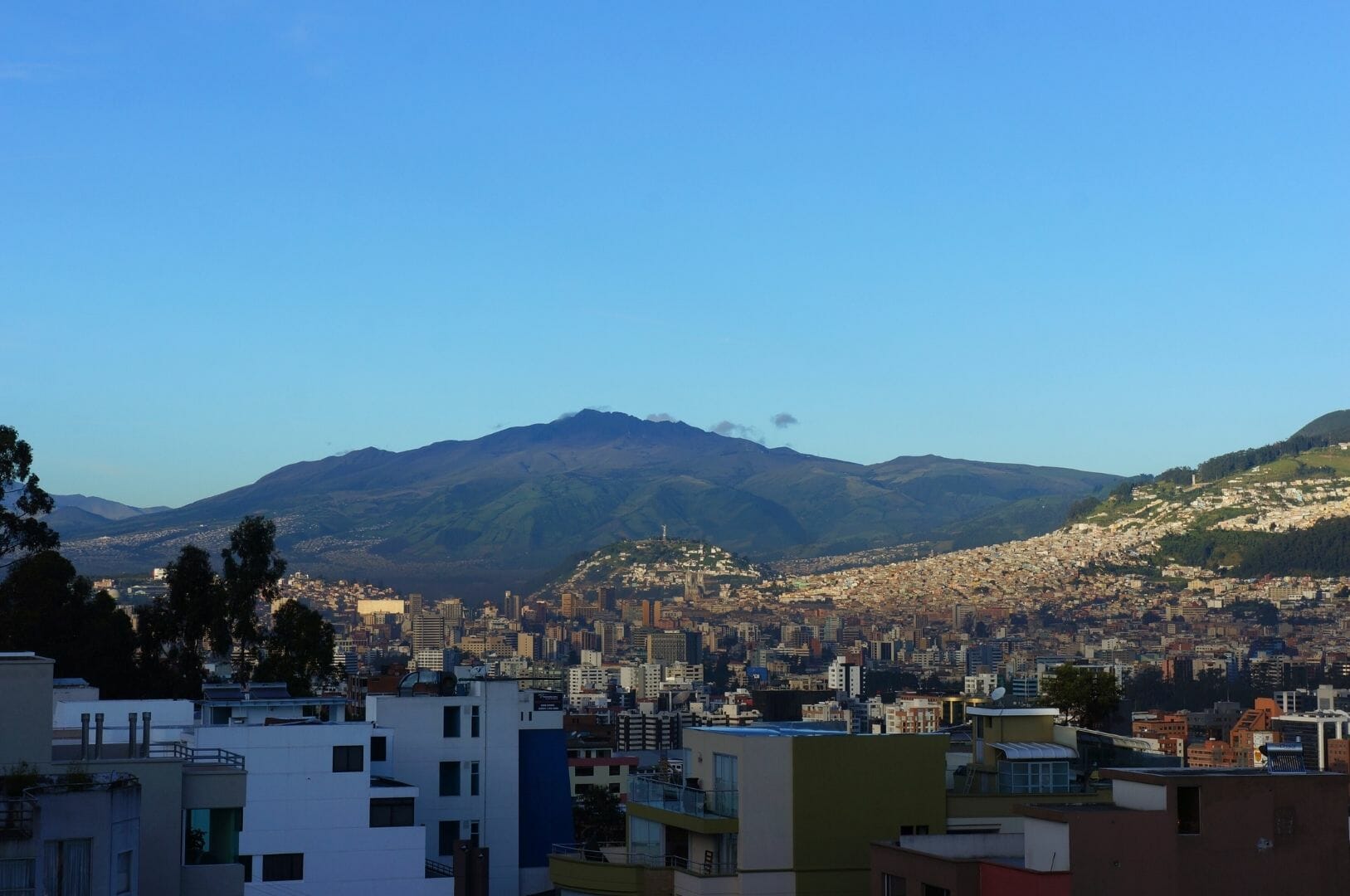
0
After Asia and the frustration of the language barrier, we decided to learn Spanish for 2 months in Ecuador to get more out of our trip to South America.
